

Tens of thousands of books find their way through The Library Store each year. This blog is dedicated to highlighting some of the hidden gems that have passed among them.
Blog entries are submitted by FFRPL volunteers. They do not necessarily reflect the opinions of the Friends & Foundation of the Rochester Public Library, its trustees and employees, or the Central Library of Rochester & Monroe County and its trustees and employees.
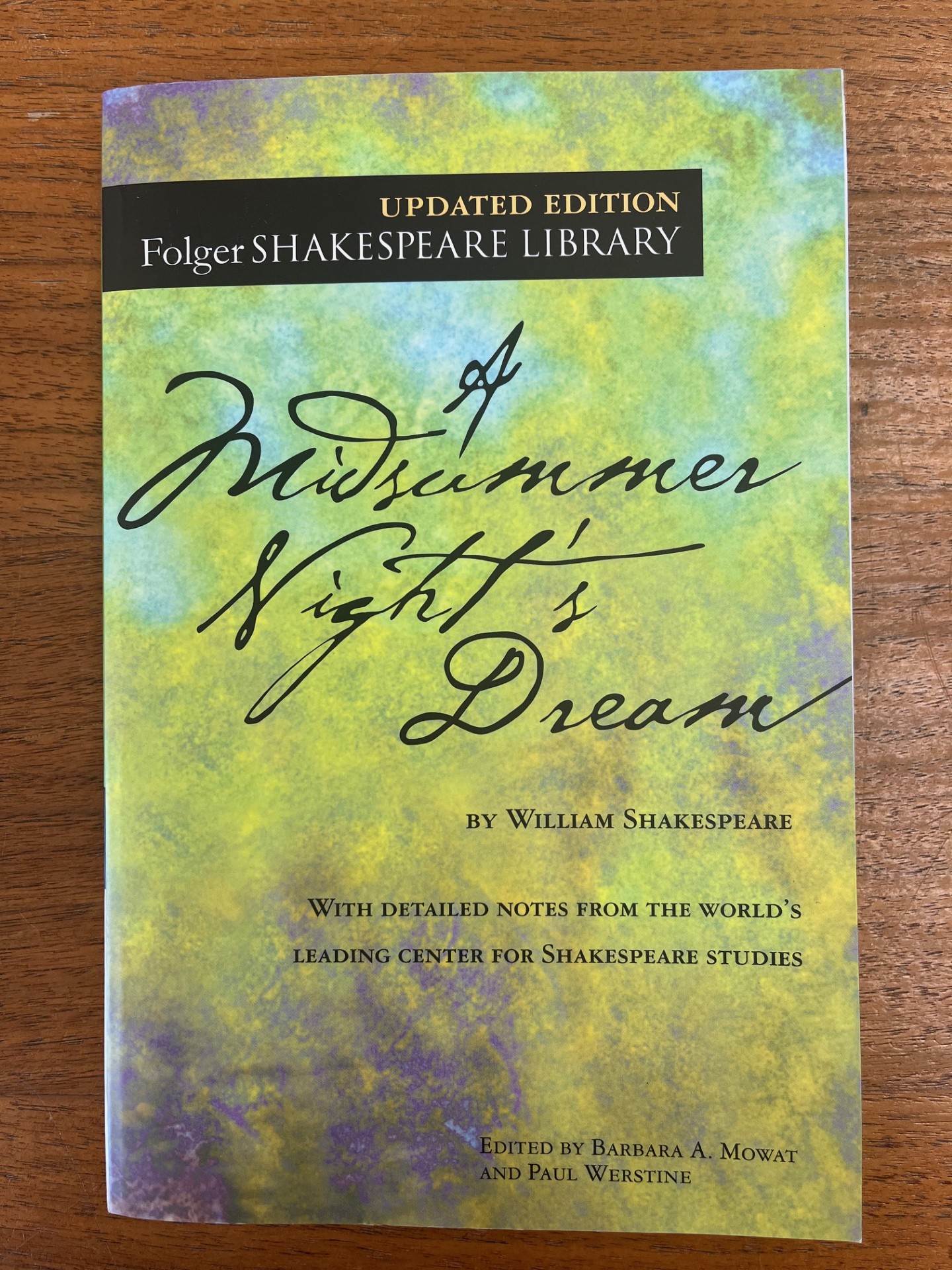 A Midsummer Night’s Dream, William Shakespeare
A Midsummer Night’s Dream, William Shakespeare
This month for their 100th anniversary Rochester Community Players are doing A Midsummer Night’s Dream. I absolutely love Rochester’s yearly Shakespeare in the Park. This play? Not so much. In high school this was the play that introduced me to Shakespeare. Back then I didn’t like it. Nor did I like any of the other Shakespeare plays my high school sent my way. Not until I saw Kenneth Branagh’s Henry V in 1989 did I understand what all the fuss was about.
This play, even though it has many characters, is not hard to understand. It doesn’t hurt that much of the comedy is physical. To summarize, for those who have not seen the play: there are four groups of characters. In ancient Athens a duke is getting married. Some village workers decide to write and put on a play to celebrate his wedding. The workers go to the woods to practice. Meanwhile, Hermia wants to marry her lover, Lysander, but her father insists she instead marry his choice, Demetrius. Hermia and Lysander escape to the woods, while Demetrius follows. He in turn is followed by Helena, the woman who loves him. Also in the woods are the fairy king and queen, who have had a falling out. Now everyone is in the woods. Of course, chaos ensues, especially after the fairy king starts putting spells on people, 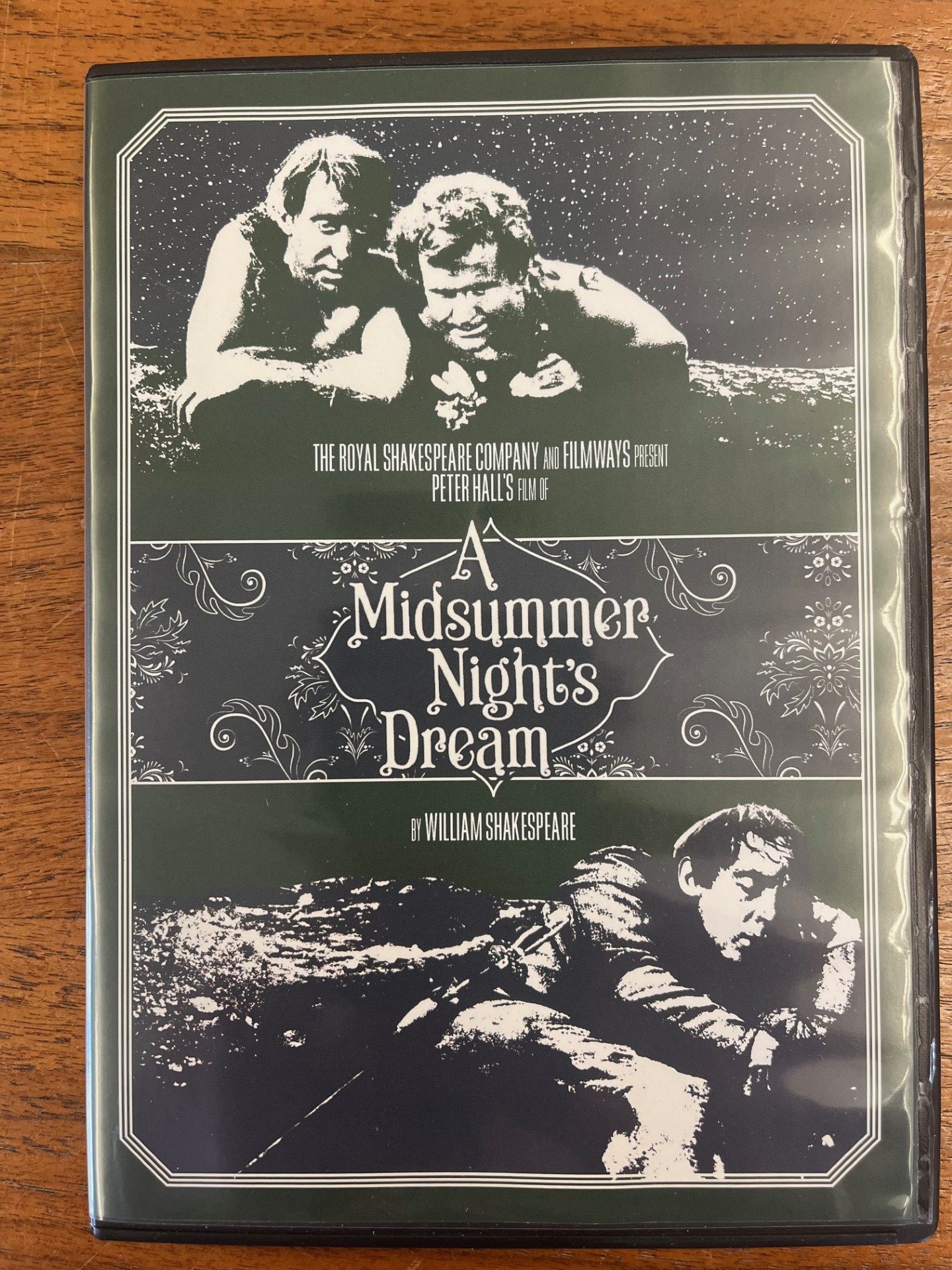 including his queen.
including his queen.
Normally I read Shakespeare’s play before I see it in the park. This year I just couldn’t. I have already read this silly play too many times. I’m not doing it again. Instead, I decided to watch the Royal Shakespeare Company’s 1968 movie version. This version of the play, though set in Athens, was filmed on an English estate. The characters were dressed in normal clothes for the 1960s, which included miniskirts. The fairies had green skin, pointed ears, and little clothing. Near nudity seemed to be all the rage in 1968. After all, Zeffirelli’s 1968 Romeo and Juliet had some nudity in it too. Still, I squirmed while watching a very young Judith Dench as the fairy queen.
This was the Royal Shakespeare Company, so of course the acting was good. I especially loved the “play within the play” put on by the workers. Both the play and their acting are so terrible that you have to laugh. I did hate how the fairies were always appearing and disappearing. It felt fake. And why were their mouths so red? I did love Puck, played by Ian Holmes, now known to most people for his role as Bilbo.
I will go to Highland Park to see this play. Even if Midsummer is not my favorite, I will still enjoy the experience of Shakespeare in the park, as the day cools down, in the dark, with fireflies flitting around. I also go to show my support for the Players.
My copy of the 1968 movie will be for sale for $5 in the bookstore. Also for sale are two brand new Folger editions of the play, priced at $4 each. Both are great deals. Enjoy!
While you are at it, please consider attending the Rochester Community Players’ free performances of Shakespeare in the Park. They start July 11th. Happy Anniversary, Players, and thank you for your efforts.
Submitted by KB July 2025
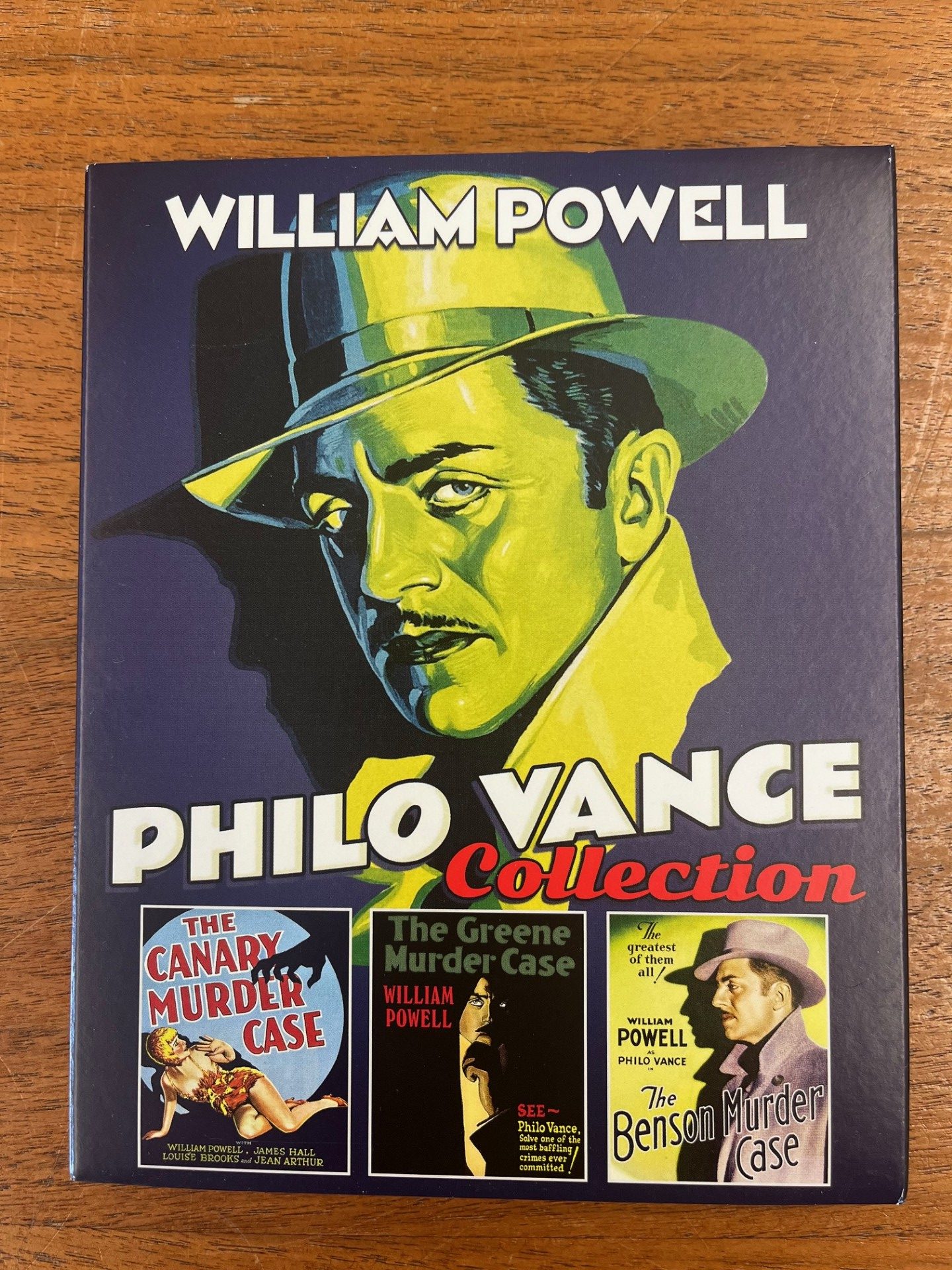 The First American Detective Movie
The First American Detective MovieThe Philo Vance Collection (The Canary Murder Case, The Greene Murder Case, and The Benson Murder Case), Blu-ray edition (1924?) $7
Have you ever heard of Philo Vance? I certainly had not. But I do love William Powell. So, I bought this DVD containing three Philo Vance movies. The William Powell character is a rich, well dressed, sophisticated man who helps the police with their cases. The first movie, The Canary Murders, is not a very good one. A cabaret performer, who makes a habit of blackmailing her lovers, is found murdered. Vance mentions that he solves murders using psychology, which in this movie means observing people playing poker. Not exactly the most riveting thing to watch. Afterwards you have a good idea of the murderer’s identity, though you must wait 20 minutes to find out for sure. Not the best plot. Nor the best characters. Plus, the portrayal of a black hotel worker is vicious.
What really stands out about this film, though, is its soundtrack, or lack thereof. You can hear some of the actors just fine, but not others. There is also no background noise. No rustling of papers. No footsteps. If no one is talking, all you hear is silence. I had never experienced anything like this.
Later, after hearing the commentary that was included with the DVD, I understood what was going on. When this movie was filmed in 1929, talking films were still a new technology. The Canary Murders, in fact, was made as a silent film. Theater projectors for “talkies” were expensive. Paramount gambled that it would be a while before theaters made the switch. Once, though, audiences had experienced movies with sound they were no longer interested in silent ones. That left Paramount with an expensive film that no one would pay to see. The studio was forced to record the actors saying their lines. All the actors in the movie agreed to this except Louise Brooks, who refused. The studio had to hire someone else to say her lines. It then tried, pretty much successfully, to end her career. In 1956 the film curator at the Eastman House here in Rochester found her living as a recluse in New York City. He convinced her to move to Rochester, where amazingly she became a respected film writer.
Most silent film actors were not able to make the transition to sound. Two actors here, William Powell and Jean Arthur, would continue as major stars for more than two decades.
Canary Murders is considered to be the first American detective movie. I can’t see how a movie without sound could present all the twists and turns of this plot using only title cards. Adding sound certainly meant movies could be more complex.
S.S. Van Dine, the author of the novel on which this movie was based, went on to write more books. Both his books and movies were popular until the early 1940s. By then better writers such as Hammett and Chandler had come along. Now both Van Dine and Philo Vance have been mostly forgotten.
The Greene Murder, the second movie in this collection, is the best of the three films. It was filmed only three months after the first, but now the sound is better. So are the plot and the characters. Much of the action occurs in a creepy old house. This is a movie that deserves popcorn!
So, watch the first movie because of its historical importance (and to see Louise Brooks), and the second because it is fun. Be sure to listen to the commentaries by Kim Newman and Barry Forshaw. Without them I would have had no sense of the importance of these films.
The bookstore has my Blu-ray copy of the DVD, watched only once, on sale for $7, which is a steal.
Submitted by KB July 2025
 Pride and Prejudice, Still Beloved
Pride and Prejudice, Still BelovedPride and Prejudice, Jane Austen (1995, the Dover Thrift edition) $1
I first read Jane Austin’s Pride and Prejudice when I was in junior high. I still remember the awe I felt as Elizabeth and Darcy’s feelings changed from mutual animosity to love. I especially remember Austin’s wit. I had no idea who Jane Austin was, or of the times she described. It was enough just to read the story and experience the joy.
I watched the 1940 movie with Laurence Olivier, and found it lacking, especially when Lady Catherine turned out to be nice. Then came the 1995 BBC mini-series with Colin Firth. It was truly wonderful. Plus, who can forget Colin Firth’s coming out of the pond with his shirt plastered to him! (That shirt lately sold at auction for $50,000.)
In 2005 another movie version of Pride and Prejudice came out. Two months ago I again saw it in a movie theater. After getting home I realized I hadn’t read the novel in years. How could that be? Well, time to go back to the book itself.
Rereading this beloved novel was like meeting up with an old friend. Perhaps I no longer felt the same awe, but there was still much joy to be found. There were also some surprises. I had forgotten just how atrocious Darcy’s actions were at that first ball, and how self-centered Elizabeth’s father was. I’d even forgotten that the novel continues on a bit after the marriage. (Unlike the movies.)
This time round, I actually read both the footnotes and introduction found in the Penguin edition. What struck me the most was the information that Pride and Prejudice, though published in 1813, had actually been written earlier at the end of the 1790s. At that time radical ideas were circulating. Mary Wollstonecraft, in her Vindication of the Rights of Women, had even suggested women could find meaning without a husband. By the time P. and P. was published, though, people had turned more traditional. Once again, marriage was the only way for a woman to find independence and security.
I was shocked that Vivien Jones, the writer of the introduction to the Penguin edition, would call this novel a romantic fantasy. The situations Austen described seemed so realistic. After some thought, though, I realized she was right. Elizabeth had made a really bad life-choice, not just once, but twice. For when her father died, she had no hope of either an inheritance or a good job. So, by not marrying, she was dooming herself to a life of poverty. Nor was it realistic to think that the very rich and traditional Darcy would have allowed himself to join a family that included such a vile man as Wickham. In all other books of the time Elizabeth would have paid the price for daring to be independent by ending up ruined, poor and unhappy.
Yet Elizabeth and Darcy do end up together, both changed by their experiences, and better people because of it. Love conquers all. For people of the time this must have been a shocker. Except maybe it wasn’t. Elizabeth, for all her independent ways, still ends up married. She will have more power than most wives of the time. But what power and money she has will only be hers because her husband gives it to her.
I still love this novel, but there is a darkness here that I overlooked all the other times I read it. Please, don’t let that stop you from reading this absolutely wonderful book. But maybe skip the extra material, at least if it is your first time.
Submitted by KB July 2025
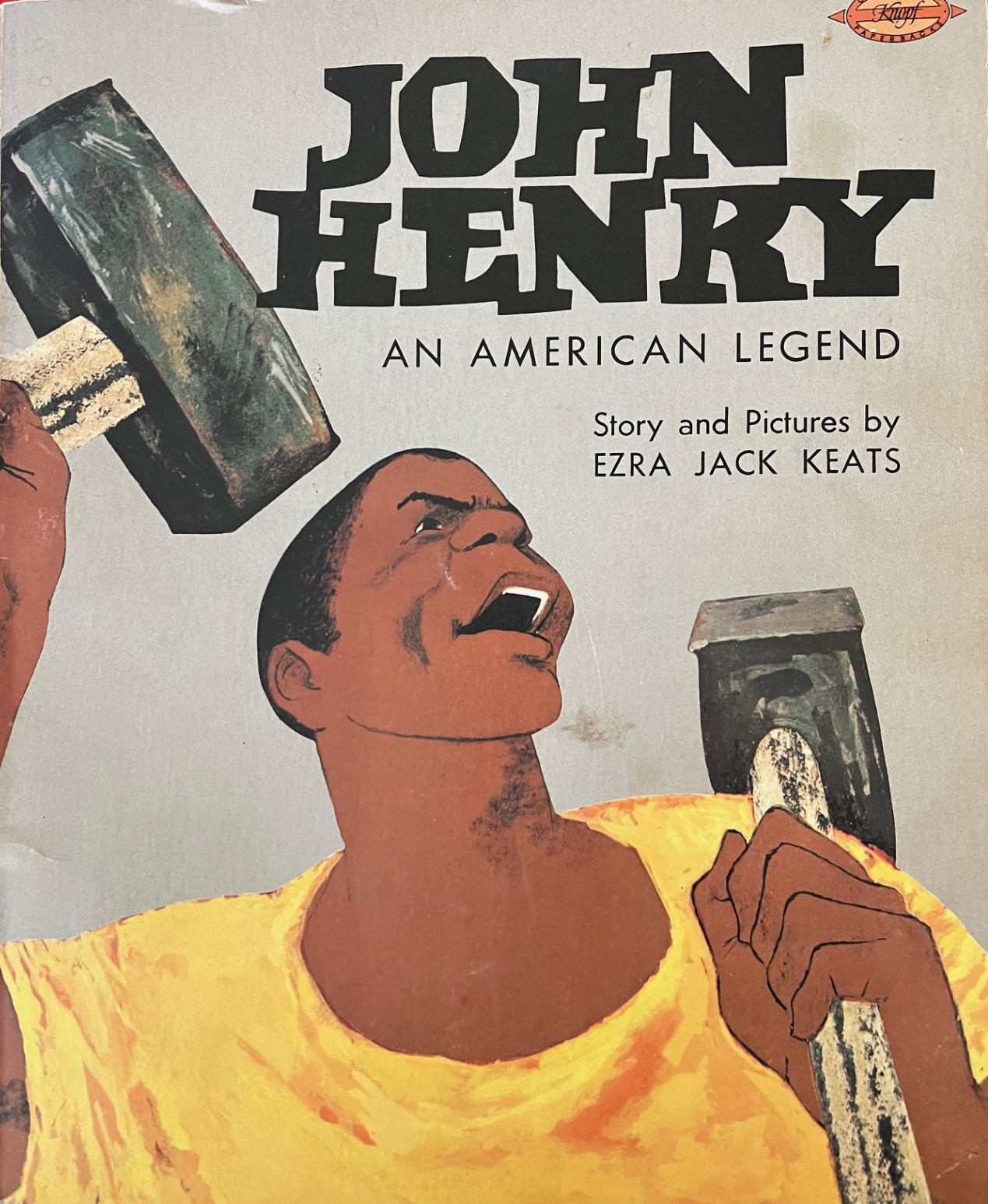
John Henry: An American Legend, story and pictures by Ezra Jack Keats (1987) SC, $1
When I was a child, I was told the story of John Henry, but by now all I knew was his name, and that he had worked on a railroad. I didn’t remember that he had saved men in a cave-in, or that he had raced a machine and won. I also didn’t remember that he was black. Reading this book brought the story back to me.
This book is for children, so it is a short read. The illustrations, done by the same person who wrote the text, are brilliant and gripping. Of course, one of the things that makes this book special is that its hero is black. Americans have way too few black heroes. Had I not been white, I’ll bet I would have remembered more about this man.
Most people know of this folk hero from songs. The songs, of which there are various versions, were covered by artists like Lead Belly, Pete Seger, Johnny Cash and Bruce Springsteen. But there were certainly John Henry songs long before there were recordings. More recently there have been several movies and television shows about him. His story also made it into literature, comics, video games, and was even on a US postage stamp.
People are always interested in finding out if a folk hero was real or not. Henry’s life was mostly investigated by two men. According to Wikipedia, Guy Johnson, a sociologist in the 1920s, found someone who claimed as a teenager to have known John Henry, and to have seen his race with the machine. He stated the race took place in West Virginia, at the Chesapeake and Ohio’s Big Bend Tunnel. Johnson, himself, was only partially convinced that the man’s claims were true. In 2006 Scott Nelson, a historian, reported his findings that Henry was a 19 year old prisoner at the Virginia Penitentiary who had been leased to the C and O Railroad to build a tunnel.
We will never know for sure if Henry was based on an actual person, but Henry, the mythical figure, became quite a famous and powerful example of strength and endurance. He was used as a symbol for both the labor and civil rights movements. Personally, I just like thinking of children being read a bedtime story where the hero looks like them.
Submitted by KB April 2025
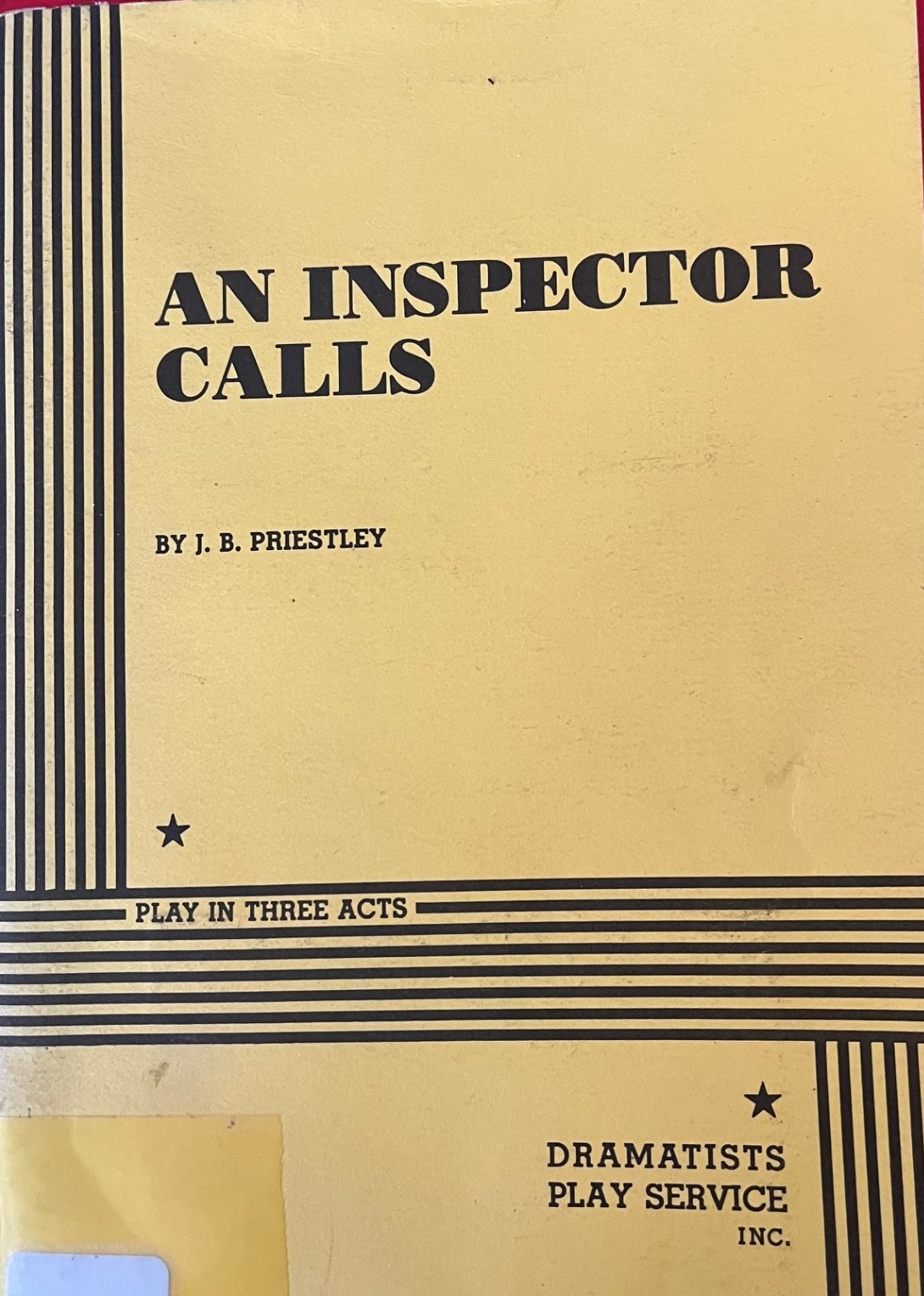
An Inspector Calls, by J. B. Priestly (1972) SC, $1
At first glance this play appears to be nothing special. It takes place a few years before World War One, in the dining room of a rich British manufacturer. Five people are at the table. A father is toasting his daughter and her new fiancé, a member of the aristocracy. Also at the table are his wife and son. Though there is a bit of tension in the air, mostly it is a time of real celebration.
Suddenly a police inspector arrives, and things begin to go very wrong. The inspector announces the suicide of a young woman, who died by swallowing acid. The father is enraged that the family’s celebration has been interrupted because of the death of someone so unimportant.
As it turns out, the father had known the dead woman. Two years earlier he had fired her for having led a strike at his factory. This was certainly the right thing to do, and he feels no responsibility for her death.
Then the inspector turns to question the daughter. Seeing the dead girl’s photo the daughter also recognizes her. A year earlier, in a fit of annoyance, she had gotten the woman fired from a dress shop. She is now horrified both by her action, and that she might have had a part in the woman’s death.
The inspector goes on to interview each person in turn. All had known the woman in some way. All had had a part in bringing her to the place where she saw death as the only solution.
We soon realize that the inspector and his interrogation are both very strange. First, the inspector is not at all intimidated by the powerful people he is interviewing, even when they become very angry with him. Then we realize the inspector already knows all the answers to the questions he asks. The girl is a nobody, and has even changed her name many times in the past years, so how could he know what he knows? At the play’s end we are left with even more questions about this inspector.
I was fascinated to see the various reactions of the family as they discover, one by one, that they had once known the dead woman. Some see nothing wrong with their actions. The rest feel some degree of guilt. We watch the daughter mature right in front of us as she faces what she and her family have done. She will survive and probably become a better person. Another member of the family may never recover. What is certain is that the lives of each person in this family have been changed forever.
As I pondered the play, I suddenly realized that most of the things the inspector brought to light might be failures of character, or unethical, but with only one exception, they were not crimes. The one criminal act could be dealt with within the family. So, after all this fuss, there would be no criminal charges, just harmed reputations.
Priestly, the writer of this work, wrote many other plays as well as novels, movie scripts, literary criticisms, and various non-fiction, but this work is his most famous. The play’s criticism of capitalism and the wealthy middle classes made it a bit controversial, plus the fact that it premiered in Moscow. In time, though, the play became highly respected, and even required reading in schools.
So, who was the inspector? Some literary experts think the inspector was actually an avenging angel. The dead woman had had no voice in life. After swallowing acid, she would never have a voice. But then the inspector calls…
Though this play seems at first to be a melodrama, it is actually something quite different. I found myself thinking about it for days. Read it and let me know what you think.
Submitted by KB April 2025
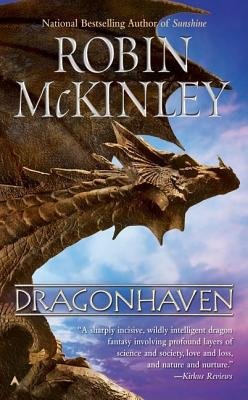
Dragonhaven, Robin McKinley (2007) pb, $3 (new)
Robin McKinley, an award-winning fantasy author, also retells fairy tales from a feminist point of view. This particular book is about dragons. Now, neither fantasy nor dragons are usually my thing, but this story had me hooked right from the beginning. Jake, the main character, whom you meet when he is only 14, is both so charming and courageous that you have to root for him. Then there is little Lois, whose antics make you both laugh and cry.
Jake lives at a time just a little ahead of present day. You see, dragons have always existed on earth, we just didn’t know it. Little is known about them, except that they are dying out. They are hardly ever seen even at the national dragon preserve where Jake lives with his father, the manager. Jake’s mother had died two years earlier, probably killed by a poacher. Still grieving, the father tries to keep the park afloat financially.
When he turns 14, Jake is finally allowed to spend a day alone inside the park. It shouldn’t be too risky. Jake can always radio for help if he needs to. When alone on this trip, Jake discovers that a poacher had somehow gotten into the park and killed a pregnant dragon. The poacher and baby dragons are already dead, the mother barely breathing. When Jake, still grieving the loss of his own mom, sees that one of the babies is still alive, he becomes obsessed with saving it. But how can he? No one has ever even seen a young dragon before, much less a baby one. And no one, not even his dad, knows how to care for one. It is also against the law to help a dragon. Anyone who does can land in prison. Yet Jake is a very determined boy. So off he goes, taking his new “daughter” home with him, and in so doing puts everyone living in the park at risk.
Jake’s experiences learning how to care for “Lois”, as he names the little dragon, are both very funny and moving, as well as quite scary. Some people at the park are in on the secret, most are not. Tourists keep showing up where they are not supposed to be. The parents of the poacher want the preserve shut down. School officials, worried that Jake is too isolated at the park, keep tabs on his mental and physical well-being. So, Jake must keep up with his schooling, including Latin, and explain away the burns on his body. (A dragon’s skin, even a baby’s, is very hot.)
Three years later, when Lois gets too big to hide, Jake decides to leave and take her deep into the park. While he is gone, things heat up at home. The army decides it has to rescue Jake. (Or is this just a ruse to kill Lois?) Unaware of all this, Jake has his own problems. One of Lois’ kin has seen him with Lois, and misunderstands the whole adopted mother thing. How do you communicate with an adult dragon, especially one that is more than a bit upset and sending plumes of fire your way!
This book has one exciting part after another. I agree with the many readers who say they would love to visit this preserve. It is too bad we can only do so in our imagination. There isn’t even another book to carry on the story. Still, I am so very grateful to Robin McKinley for all the joy I’ve felt while learning about Jake and Lois. And Gulp, and Bud, and…
Submitted by KB December 2024
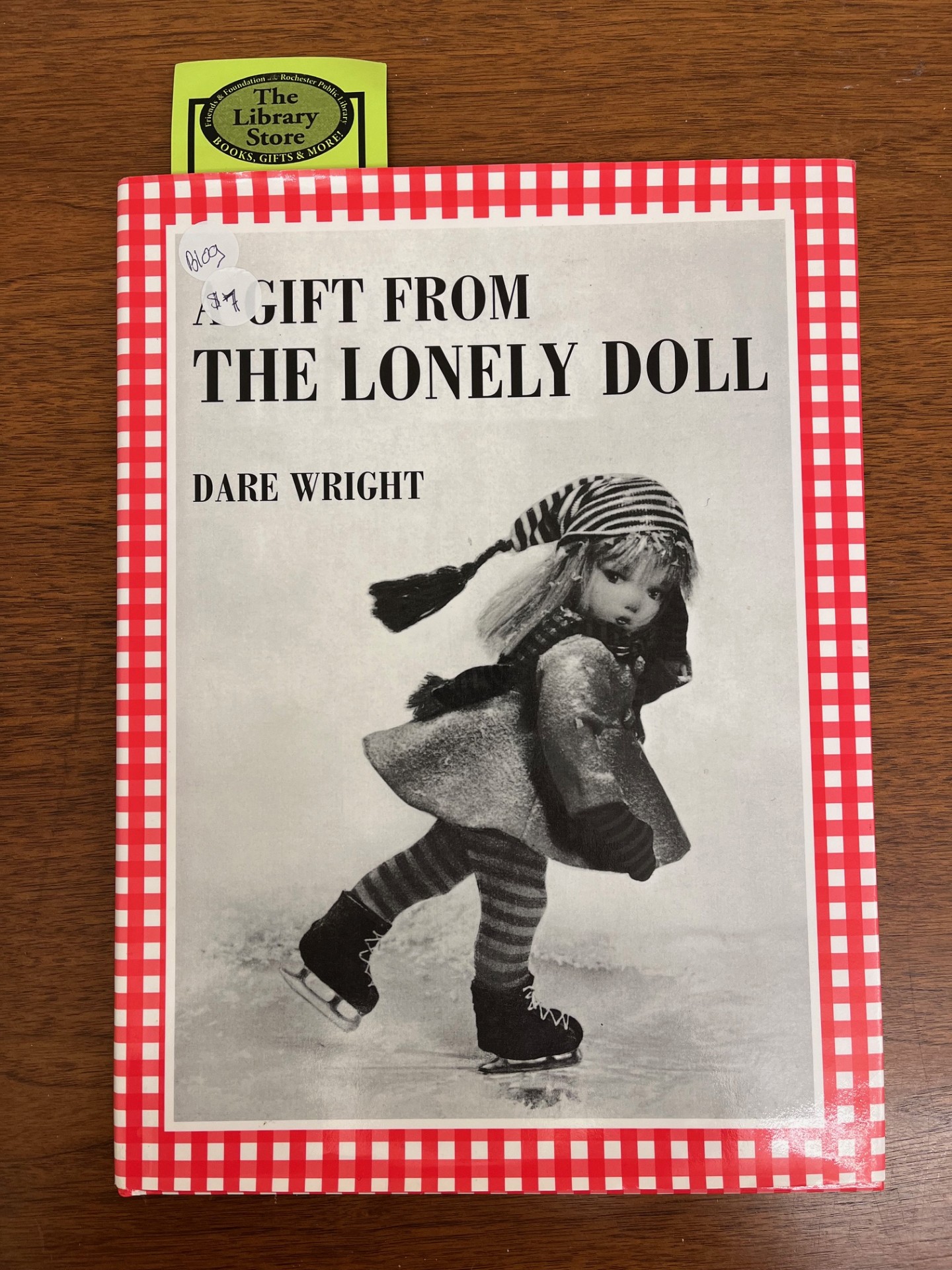 Lonely Doll, Lonely Woman
Lonely Doll, Lonely WomanThe Gift from the Lonely Doll, by Dare Wright (2013?) HC, with DJ, in very good condition, $7
My grandmother used to send me Lonely Doll books each year for Christmas. More than fifty years later I still have two of them. I assumed these delightful books with their photos of a doll and two bears were long out of print, but no, starting in 1998 they were reissued, and are still available today. But controversy surrounded the Edith books in 1998, and still does now.
Some people, including those who loved these books as a child, feel the Edith books are creepy. Some say Edith, the doll, is too passive. Some say the book’s themes are too sad, or too dark. Then there are the photos where Mr. Bear spanks Edith, which critics find too violent, and even a bit erotic. Her biography was published in 2005, four years after her death. It revealed just how excruciatingly strange and dark Wright’s life had been. I remember wishing I had never read the biography, because now the Lonely Doll books seemed tainted. Twenty years later I no longer feel weirded out, just sad that she had such a painful life. At least she had photography as an outlet for her pain.
Wright started out as a model, then moved on to doing photography, an unlikely profession for a woman at the time. In 1957 the first Edith book was published, which brought her fame, but not happiness. Though she had little control over most of her life, she could control the worlds she created and photographed. The doll she photographed was from her childhood. Wright would carefully pose that doll and the two bears, using thin fishing wire to keep them in position while she photographed them. She also sewed Edith’s clothing. I like to think that doing all of this brought her some joy.
So, what about this book, A Gift from the Lonely Doll? Even after reading all the criticisms, I found it charming. Edith is knitting a scarf for Mr. Bear for Christmas. The three of them all go off to spend Christmas with Mr. Bear’s relatives. Little Bear keeps telling Edith there is something wrong with the scarf she is making, but she does not listen.
The story is sweet. The photographs wonderful. In this story, at least, Edith is not passive but solves her own problem. I occasionally felt unnerved by the juxtaposition of the small sized doll and bears with a normal sized world. Though that never bothered me as a child. Maybe because I was small and everything around me was large, so why would I have thought these photos strange?
I still feel sad for the author, but she left quite a legacy. I cannot say for certain that I would recommend her other books, but I do this one. The one for sale in the store is a hardcover copy in near pristine condition. So read it and enjoy.
Submitted by KB December 2024
 Charles Dickens’ Favorite Child
Charles Dickens’ Favorite ChildDavid Copperfield, by Charles Dickens (2000) new sc, $3
Dickens’ novels may be truly long, but they are not hard to read. This novel, unusual for the time, was written in the first person, so you really get to know David, his main character. You find yourself, though, swept up in the lives of his other characters as well, because his descriptions are so vivid and detailed.
Though David never knew his father, his childhood is initially happy. Once his mother remarries an abusive man, David’s life turns grim. He is soon sent away to boarding school where life is even worse. When his mother dies a year later, the 12-year-old is sent to work in a warehouse. Seeing his life as hopeless, he runs away to an aunt he has only heard about.
Aunt Betsy, however, does take him in, and sends him to a good school where he thrives. David later begins a career, but loses his job when his aunt suddenly becomes poor. Now he must find a way to not only support himself and his aunt, but also to make enough money to marry his beloved Dora. David takes on the difficult task of learning stenography to get a high paying newspaper job. He also starts writing stories for magazines. Eventually he writes a successful novel. He is now well off and married to the woman he loves. All should be well, but of course it is not.
This novel, which Dickens called “his favorite child”, was his most autobiographical. The descriptions of life both in the first school and at the warehouse were all based on Dickens’ own experiences. In fact, Dickens was so ashamed of his work in the warehouse that until he died only his best friend ever knew of it. The description of his love for Dora was also based on Dickens’ own first love, although in real life they would never marry.
David Copperfield is the story of a young man’s coming of age. The experts say it was written in part to help Dickens deal with his past. Parts of the story are very funny, others just sad. I found much of the book infuriating as people keep making bad decisions.
David, himself, makes many mistakes. Even when he gets older, he still seems at times naïve. He idealizes his childhood friend, even after that friend has brutally betrayed the family David loves. Yet David continues to love him, perhaps because he has such an acute need for love and acceptance.
David also misjudges the woman he marries. She is pampered and shallow, with no ability to manage a home, or to be his intellectual partner. They love each other, but she will never be anything but a child. He eventually accepts the situation, knowing that what he had dreamed of will never be, at least with her.
There are people that David does see through. He rather quickly recognizes the vileness of a truly slimy character, Uriah Heep. David also sees the faults of Micawber, a friend, who though jovial, is undisciplined, always in debt, and always running from trouble. Though his actions hurt many people, Micawber sees none of the harm he is doing. Experts on Dickens say that Micawber and his wife, though written about in a mostly comic way, were based on Dickens’ parents, people whom Dickens never really forgave.
This is a hard novel to blog about. There is so much I want to say, and not enough space. David Copperfield is special just as a novel, but add in all the autobiographical parts, and it becomes a book everyone should read at least once.
After writing this hopeful novel, Dickens’ books became dark and more critical of British life. His books are even given credit for the coming of reforms to Britain. What an author! What a man!
Submitted by KB December 2024
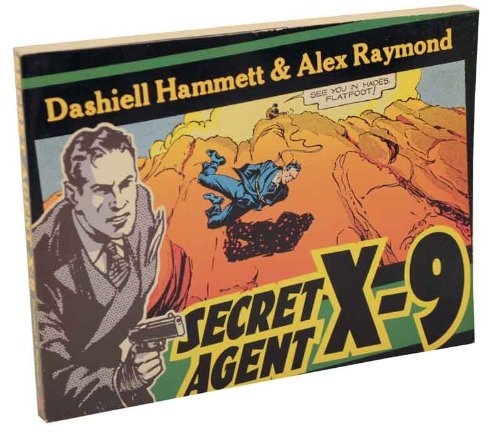 Secret Agent Man….
Secret Agent Man….Secret Agent X-9, by Dashiell Hammett and Alex Raymond (1983) SC, $3
In 1933 William Randolph Hearst had a problem. His rival’s newspaper had an extremely popular comic strip, Dick Tracy. To compete, Hearst wanted his own popular strip. Hearst had money, but where would he find a great writer? Dashiell Hammett also had a problem. He was at the top of his fame, having written the Maltese Falcon, but he was also broke. A partnership between the two seemed like a good idea.
Unfortunately, all did not go well. For one thing, Hearst’s staff was always making changes in Hammett’s work. For another, Hammett was almost always ill. During his service in World War One he contracted tuberculosis, which he would have all his life. Plus, he was an alcoholic. Eventually Hammett totally stopped writing and Hearst fired him. This was fine with Hammett because by then Hollywood was offering him more money to write screen plays.
The artist for this comic, Alex Raymond, though a newcomer, had already created Flash Gordon. He stayed with the comic only a little longer than Hammett. But Raymond would go on to even greater fame, whereas Hammett never wrote another novel. Hammett would serve in World War Two, go to prison during the Communist Red Scare years, be blacklisted, and become very, very, ill. Ironically, he is buried in Arlington.
All this was in the future when Hammett wrote these stories. He is considered one of the best mystery writers ever, and these stories bear this out. The writing is taut, biting, and sometimes very funny. The plots are terrific. And the characters…
Hammett’s hero is a man without a real name, working for an unspecified agency. He works alone. This secret agent is smart, creative, strong, athletic, and very sexy looking, especially without his shirt on. He does not drink, but does smoke incessantly, knows how to drive amazingly fast, and how to shoot a gun. But he has no special gadgets, or superpowers, and he sometimes does get hurt.
The women in the stories are either villains or innocents needing to be rescued. Both are always jaw-droppingly dressed in the latest styles, which I find amusing. His male characters are also excellent. Best of all, though, are the two children in the third story. They are remarkable for their bravery, determination, and ability to help out the hero when he needs it.
This is a regular comic strip, not a graphic novel. There are 6 frames per page in this book. Originally the comic would have come out daily. I assume that meant 3 frames per day. So, reading this all at one time must be quite different from what it was like reading it over 7 months. Secret Agent Man, though never as popular as Dick Tracy, did continue to appear until 1996.
Hammett was not the author of Secret Agent for long, but while he was, this comic strip was something special. Read this collection and I am sure you will agree.
Submitted by KB June 2024
 Pericles, Folger and The Rochester Community Players
Pericles, Folger and The Rochester Community PlayersPericles, by William Shakespeare, published by the Folger Library (New) SC, $3
Pericles, being performed this July by the Rochester Community Players, is one of the least performed of Shakespeare’s plays. He may not even have written the whole play. It is certainly a very simple play. Yes, there are lots of characters, but the plot is very uncomplicated. There is even a narrator who tells you at the beginning of each act what is going to happen.
Even so, I rather liked this play. Maybe that’s because my life right now is chaotic, so simple is good. The copy of the play I read was of course a Folger Library edition. My high school always gave us editions by Folger, and I have stuck with them ever since.
The play Pericles starts with the young, adventurous king wanting to win the hand of a princess. To do so, he must guess the answer to her father’s riddle. This riddle thing is a mite dangerous, because if he does not answer correctly, he will be killed. Unfortunately, even though he does figure out the riddle, he is still in trouble, because now he knows the king’s secret, and must flee for his life.
He sails away, but a massive storm wrecks his boat, leaving him the only survivor. He has lost everything, but he still wants to wed a princess. In this new land he captivates the king’s daughter, and they wed. Soon though, he must return to his country to retake his throne. He leaves, taking his pregnant wife with him. Again, there is a storm. His wife dies after giving birth to a daughter. To placate superstitious sailors, his wife’s body is thrown overboard. At the nearest port, Pericles hands over his daughter, Marina, to be raised by that country’s king.
Marina grows up to be beautiful, so beautiful that the local lads ignore the king’s own daughter. The queen finds this intolerable, so hires an assassin. Oh, dear! Pericles now won’t have either a wife or a daughter! (Though why he waits for his daughter to be a teenager to fetch her home is a mystery.) What a tragedy!
Except, SPOILER ALERT, it isn’t. Of course I am leaving out a lot, and some of it is very funny. So go see the play!
I want to tell you a little about my hero, Henry Clay Folger, the founder of the Folger Library. What an amazing man. He started out poor, barely managing to eke out enough money to go to college. Folger then got a job as a clerk for an oil firm. That firm was soon bought out by J. D. Rockefeller, said to be the “richest man on the planet.” Somehow Rockefeller noticed Folger and took him under his wing. Folger would become president of The Standard Oil Comp. of N.Y. and make himself millions.
Both Folger and his wife had long been fascinated by Shakespeare. They would end up having the largest collection of Shakespearian items in the world. A library was built in 1932 to house all his purchases. That library, newly renovated and enlarged, has just reopened. Should you be in the Washington D.C. area, be sure to visit.
Thank you, Shakespeare. Thank you, Folger. And a huge thanks to Rochester Community Players for all their efforts for all these years.
Submitted by KB June 2024
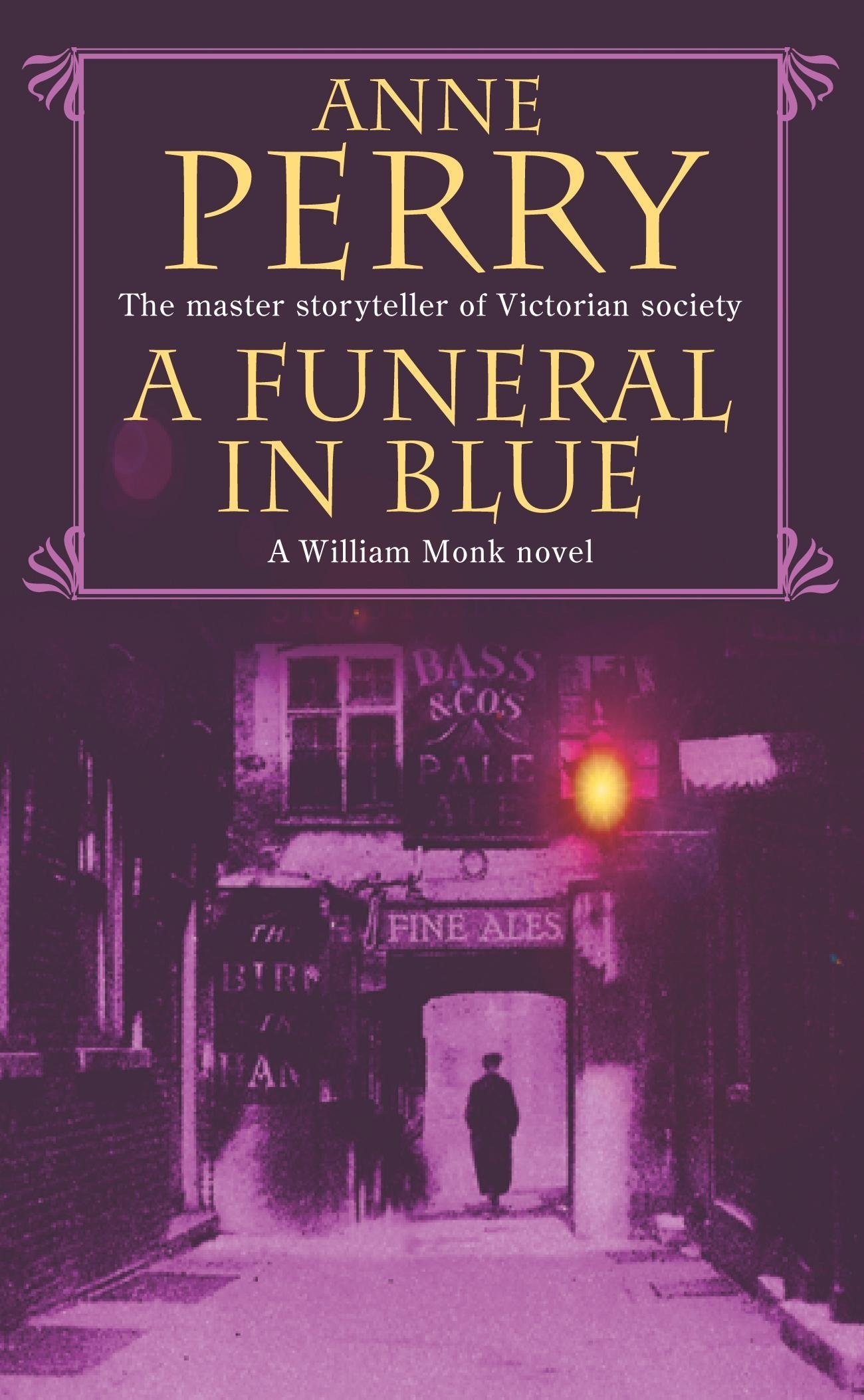 Anne Perry: Monk and His Enemy Work Together
Anne Perry: Monk and His Enemy Work TogetherFuneral in Blue, by Anne Perry (2001), HC, $1
I was introduced to Anne Perry after watching the TV movie, The Hangman of Carter Street. I liked the movie so much that I read the book, and then some of her others. At first there was only the Thomas Pitt series. Ten years later she would introduce us to William Monk, a dark, angry hero I did not like as much as Pitt.
I started this book about Monk with some trepidation, but surprisingly I liked it. For one thing, Funeral in Blue is full of historical information. I am interested in Victorian era mourning practices, and Perry included a lot about that here. There were also bits about the revolutions that spread through Europe in 1848. For me, this was all fascinating.
The strangest thing about this particular Monk book is that police Superintendent Runcorn, the man Monk had always seen as his enemy, becomes temporarily his partner. Monk is everything Runcorn is not- smart, sophisticated, and sure of himself, at least as a policeman. Runcorn may be sly, ambitious and prejudiced, but he is also smart enough to know Monk is the better policeman, and that he needs Monk to solve this case. Here, for the first time we see Runcorn showing compassion for a murder victim. Like Monk, we readers learn things about Runcorn, that, though we may never really like him, help us at least to understand him a little, and maybe even have some sympathy for him. Watching the relationship change between Monk and Runcorn is truly engrossing.
When I read a mystery by Anne Perry I am always astounded to think of her past. At the age of fifteen she and her best friend brutally murdered the friend’s mother. Perry went to prison for 5 years. After leaving prison she changed her name. Her first novel, Hangman, was published 20 years later in 1979. The fact that she had been in prison was revealed in 1994. Knowing her history does occasionally give me pause when reading her descriptions of violent murders. How many other authors really know what it is like to kill someone?
After the revelations, Perry has said she was surprised her friends stood by her. So, obviously did most of her readers, including me. Anne Perry died a year ago at the age of 84. She had written more than 100 books, half of which are books about Monk or Pitt. How astonishing, especially since she only started writing when she was 40. Rest in peace, Anne Perry.
The plot of this book is well done. The characters, especially Monk’s wife, are marvelous. The ending surprising. This book was more than I hoped. Try it and see what you think.
Submitted by KB June 2024
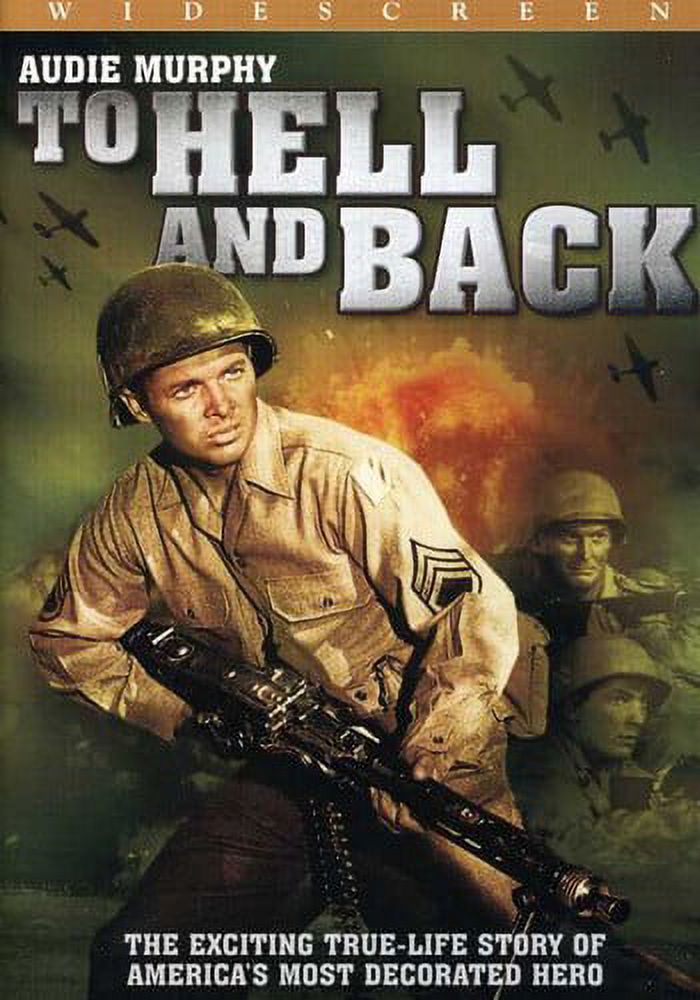 When Heroes Were Real
When Heroes Were RealTo Hell and Back, with Audie Murphy, DVD (widescreen version of the 1955 movie) $3
My father had told me about Audie Murphy, both of his heroism in World War II, and that he had later become a movie star. Still, I did not know the specifics until I read his autobiography.
Murphy had a hard childhood. He was one of 12 children. His father, a sharecropper, abandoned his family. Murphy left school in fifth grade to support his mother and siblings. She died when he was 16. A year later he tried to enlist. Both the navy and marines refused him because he was short, underweight, and underage. The army did take him, after he lied about his age. But since he looked so very young, his commanders tried to keep him from going to Europe, and from combat. He would have none of that, so off he went to Africa.
He turned out to be an amazing soldier. He was an ace with a rifle, a great leader of men, and amazingly brave. He won every award for bravery the army gave out, including three Purple Hearts and the Medal of Honor. Toward the end of the war, he got on top a burning American tank, and for an hour used its machine gun to ward off an attack by a company of German infantry. (Note: burning tanks tended to explode.) Though wounded, he then led a counter attack.
In addition to being an amazing soldier, he was also very, very lucky. He would survive the war and go home with a 50% disability from an earlier injury to his hip. At home he was given parades and a cover story in LIFE magazine. Several years later he would go to Hollywood, make 40 films, and get a star on the Hollywood Walk of Fame. He was only 45 when he died in a plane crash. What a life.
All, though, had not been well. Murphy had suffered from mood swings even as a teen. The war left him with what is known today as PTSD. I find his bravery in speaking out about his issues, and his attempts to get assistance for fellow vets, as inspiring as his bravery in combat.
This movie is not bad if you don’t know Murphy’s history. Though seeing a 30-year-old playing someone in his late teens is just weird. Weirder yet, is how he almost pulls it off. How surreal it must have been for him to replay all the events that left him with PTSD. While watching the movie, though, I just couldn’t get over thinking how far from reality the movie version was, even if the events really had happened.
My advice- If you know nothing about Audie Murphy, watch the movie. Better yet, read his autobiography. Also, do a Google search- Murphy was so humble that he left parts of his life out of his book.
Thank you, Audie Murphy, for your service.
Submitted by KB January 2024
Mrs. Dalloway, by Virginia Woolf, SC (new), $1
Virginia Woolf’s writing is confusing, frustrating, and disturbing. She uses only stream of consciousness writing. There are no chapters. You are swamped constantly by every character’s thoughts, feelings and behaviors. Woolf continually jumps from one character to another. You never know if a new character is important or will never show up again. Pronouns sometimes link up, not with the person in the sentence before, but instead with somebody pages back. Yes, reading Virginia Woolf is confusing.
The plot is minimal. Mrs. Dalloway spends her day getting ready for a party that she gives in the evening. And there the novel ends.
Her characters are certain they know what other people are feeling and thinking, but none of them really has a clue. Nor do they understand themselves. Amazingly, though all this chaos, we the readers, eventually do get to understand these people, but it takes a lot of work.
Woolf tells us about two groups of people that only marginally connect. Mrs. Dalloway is recovering from sever influenza. She now has cardiac complications, and thoughts about her own mortality. But it is spring, and she is giving a party. And, oh, she does love giving parties. Except this time one friend from her youth unexpectedly shows up, then another. In remembering their past together, she tries to make sense of who she was then, and who she is now.
The second group of people is a shell-shocked World War I vet and his bride. She is attempting to get him professional help. This doesn’t end well.
Both Mrs. Dalloway and the war vet are truly lonely people. Neither can share their feelings, even with the people who love them. Part of the problem is that, being British, they have been taught to repress their feelings. This was also the time before Freud’s theories of the unconscious, and before homosexuality was talked about. Still, even now, don’t we all also have to make our way through a messy world, having imperfect insights about ourselves and others?
Commentaries talk about how repressed, depressed, and lonely Mrs. Dalloway was. I was amazed to see how little she mentions her husband, though her whole identity is tied up with being his wife. Still, she is coping, and does experience some joy. I see her as a survivor, and someone to admire. The commentaries disagree.
The doctor’s treatment of the WWI vet is past appalling. Almost certainly this is Woolf talking about her own depressions and doctors. If you were depressed then, and had money, you went to a rest home. There you would be kept for months in bed without books, paper to write, and any contact with friends or family. Knowing that, I can understand why Woolf later decided to commit suicide after her depression came back.
When I initially read this chaotic novel, I coped by making myself float above the characters as I intellectually tried to figure out what was going on. Eventually, I started connecting to them. By the novel’s end I was so entangled, that even weeks later I was still thinking about these people and their writer.
What a book, and well worth the trouble it takes to get through it.
Submitted by KB January 2024
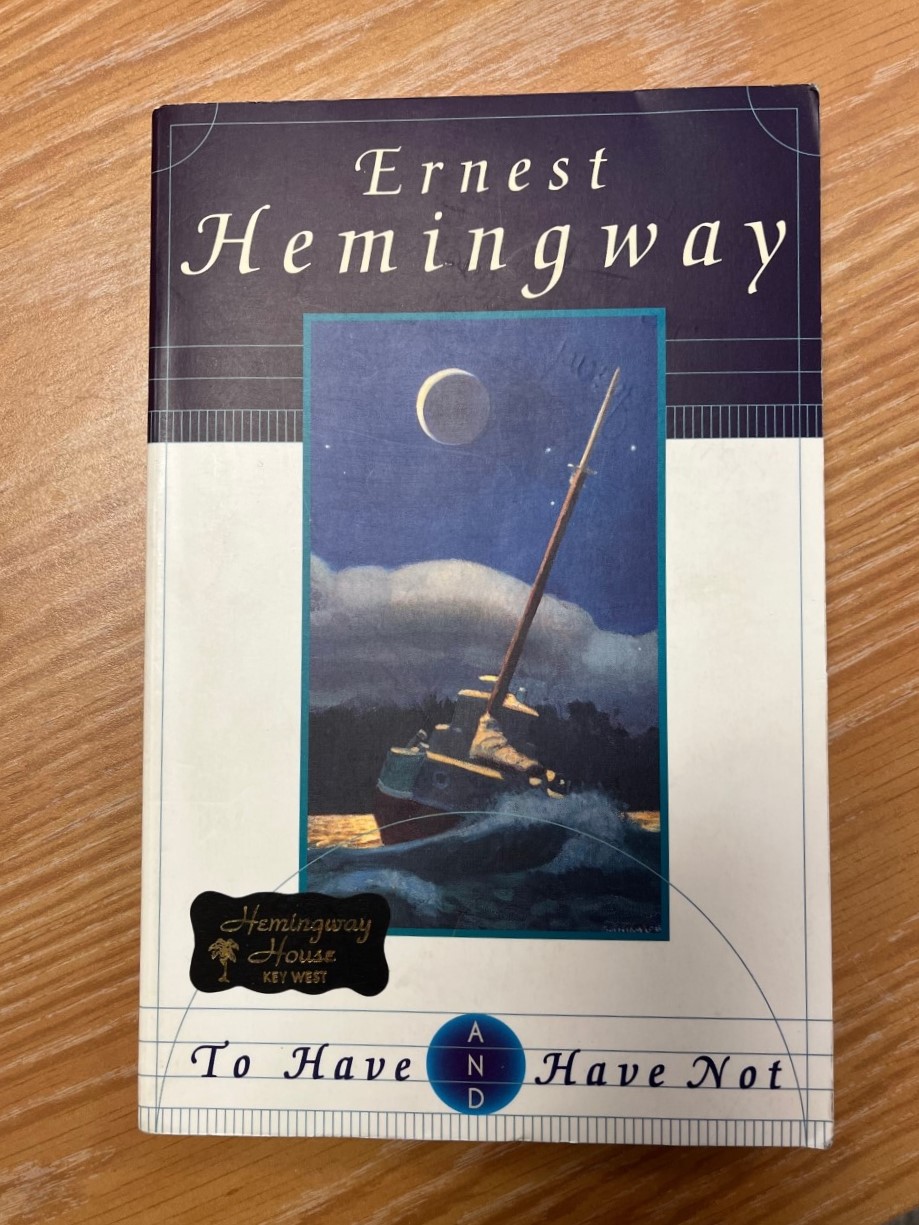 Frustrated and Confused by Hemingway
Frustrated and Confused by HemingwayErnest Hemingway, To Have and Have Not, PB, $1
Just before Thanksgiving, a copy of Hemingway’s To Have and Have Not came my way. I thought it would be a nice read for the holidays. In high school I had loved his novels. Since this book is shorter than most, and since I had loved the movie, what possibly could go wrong. Right?
Sigh… I had trouble even getting through the first 50 pages. All this deep sea fishing stuff, which I should have found fascinating, instead made me feel confused about what was “really” going on. I also intensely disliked the “hero”. And this was before he abruptly strangled a man in chapter two.
After finishing the book I still felt bewildered. So I did what I do when a book frustrates me. First, I checked the library for books on To Have and Have Not. No help there. Then I tried to buy the CliffsNotes, but found there wasn’t one for this title. (In retrospect that should have been a red flag.) Finally on Amazon I found another company’s study guide. Oh joy! By this time I had read this darned book a second time but without any more clarity. Now, with my new guide by my side, I eagerly dug into the book again. What a disappointment. No answers, and some of what I had figured out the guide disagreed with. (It was time to take a break and eat cookies.)
Am I the only person who has problems with this awful novel? As it turns out, even Hemingway apparently didn’t like this book.
I’ve learned a lot these last few weeks. I now know a fair amount of stuff about Hemingway, Cuba, and the Florida Keys during the Depression. More importantly I now know to be more patient with myself and my reading skills. In the future if I have problems with a book, I will at least consider that the problems may not be with me. Ironically, this frustrating time taught me to be stronger and more determined, all characteristics that Hemingway admired. Still, Hemingway might not think much of all this. No matter, I do. Oh, what a grand little adventure I started out on so innocently!
P.S. I won’t be reading another Hemingway anytime soon.
Submitted by KB February 2023
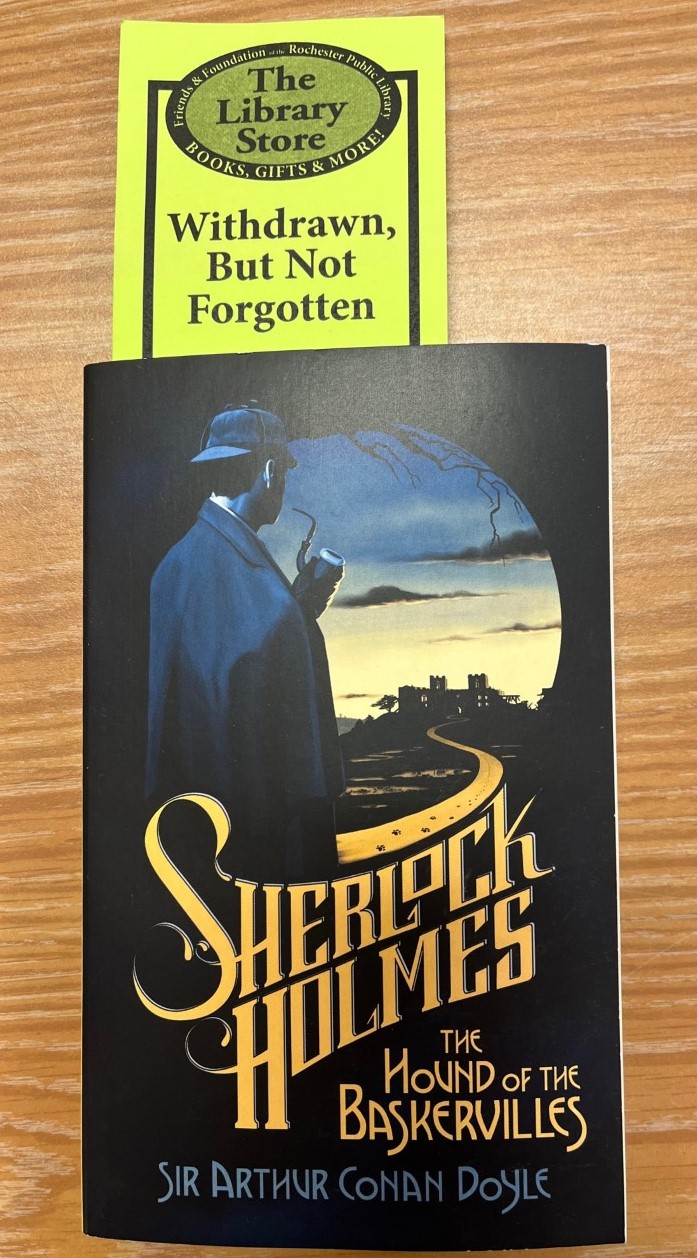 Sherlock Holmes, Back from the Dead?
Sherlock Holmes, Back from the Dead?Sherlock Holmes: The Hound of the Baskervilles, Arthur Conan Doyle (2001) P.B., new, $1
The Hound of the Baskervilles made quite a stir when it was published in 1901. For one thing, Sherlock Holmes had been “dead” for eight years. Arthur Conan Doyle had grown tired of writing stories about him. Doyle had been paid huge amounts of money for them, but now he wanted to write other things. This left both his publisher and his readers very unhappy. So Doyle wrote this story, which supposedly took place much earlier when Holmes was still alive. (Several years later, amazingly, Holmes would prove not to be dead, which made everyone happy, except maybe Doyle.)
The Hound is different from most Sherlock stories. For one thing it is not a short story, but a novel. It also takes place mostly outside of London, with Sherlock absent for the entire middle third of the story. How weird is that!
Sherlock has been asked to investigate threats against the new heir to the Baskerville fortune. The prior owner had been found dead with a giant paw print nearby. Had the man died of fear, or had he been murdered? And if so, by whom? Or what?
In his extremely arrogant way, Sherlock is determined to use logic and science to get answers to those questions. He has little compassion for anyone who is superstitious. He also has little respect for those who are not male, or of the upper class. Laughingly, it is his own actions that very nearly bring about the death of his client! At least he is honest enough to acknowledge his error!
I love how Doyle describes the moors. To me, the English moors have always seemed exotic, mysterious, changeable and dangerous. Doyle’s moors are even creepier. Dying ponies scream as they disappear, sucked down by quicksand. Other things seem to disappear as the fog advances. An escaped convict, a brutal murderer, is on the loose. Most chilling is the night time baying of a large, possibly supernatural hound.…
The commentaries I read made much of the fear British Victorians felt toward foreigners. They saw both themselves and their civilization as superior to all others. Yet, now their world was being threatened. Foreigners, who acted and thought differently, were moving in. Danger was in the air. Even violence was possible. Sherlock is determined to keep at least his part of the world safe.
I found it ironic that the danger in this novel has no foreign cause. The moor is English. So is the escaped convict. The idea of a killer hound comes only from British myths. Even the murderer is English, at least in part. I also found it ironic that Sherlock Holmes disbelieved in anything paranormal, while Doyle, his creator, at least in his later years, believed strongly in spiritualism.
I loved this book as a teenager, just not so much now. Still, as one of the first mysteries ever written it is worth reading, though be prepared for a bit more humor than was initially intended.
Submitted by KB February 2023
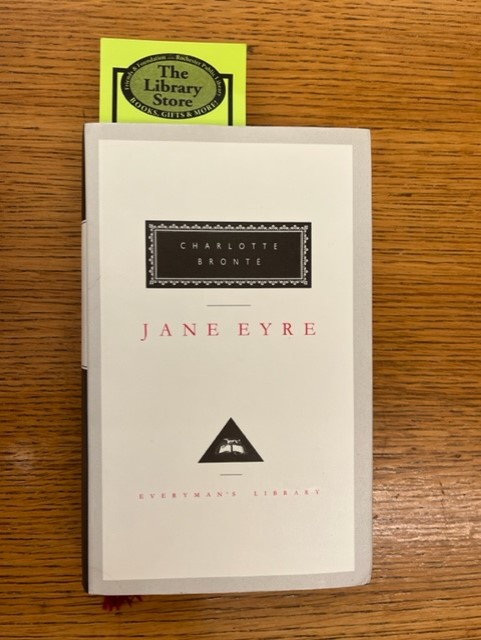 Jane! Jane! (The Wonder of Jane Eyre)
Jane! Jane! (The Wonder of Jane Eyre) Jane Eyre, by Charlotte Bronte (1991) HC, $1
I have read Jane Eyre four times. I have both loved it, and hated it. Regardless, the characters in Jane Eyre are more than memorable. Jane, herself, is spunky, imaginative, very truthful, and certain of what is right. Some of her thinking, though, is plain weird. She is, also, prone to occasional emotional outbursts and decisions that leave her vulnerable.
The men in Jane Eyre are also memorable. All three main men are exceedingly arrogant, opinionated and sure they are right. The head of her school is a tyrant. The children at his school are abused, malnourished and improperly clothed, but Reverend Brocklehurst sees himself as a truly religious man. Edward Rochester, her employer, switches constantly from being kind to being cruel. Once Jane has said she will marry him, he ignores what she says and tries to dress her up like a doll. Oh, and he “forgets” to tell her he is already married. St John Rivers, whom she meets later, is a minister preparing to become a missionary. He thinks he loves God, but how can you love God without loving his people? He tells Jane either marry him, or she will burn in hell. No matter that they are first cousins, and she is too frail for India. All three men are just awful!
What is easy to forget is how young Jane was, and how little experience of life she had had. She had lived in only three places and had known so few people. She had no money, no family, no friends, and few skills. Life for such women at this time was grim indeed.
Charlotte Bronte is certainly well read. Her character Jane is always quoting and making allusions to, among many others, Shakespeare, Milton, Blake, Scott, Keats, Greek mythology and of course the Bible. The version I just read had copious footnotes to help me on my way. The book for sale in the store does not, so you’ll be on your own. But this doesn’t hurt the reading of the story, and this copy is a beautiful hard cover with its own bookmark.
I always wondered why Rochester did not divorce his wife. Actually, at the time of this novel, the only way in Britain to divorce was to have a private act passed in Parliament, a rare occurrence. Jane Eyre was published in 1847. The first divorce act was passed ten years later. I wonder if Bronte’s book, an immediate best seller of its time, had anything to do with that.
Jane Eyre has a very Victorian ending. Edward Rochester redeems himself by trying to save his wife and staff when his house is on fire. Afterwards, though blind and mangled, he contemplates his sins and begins to have a relationship with God. It is his prayer to God that sends Jane back looking for him.
All this is very edifying, but that is not why I love this book. What I will always remember are Jane’s words of passion to her employer. She may be little, poor, and plain. She may in her lifetime have known little except neglect and abuse. In spite of all that, she has a sense of self-worth that makes her the equal of anyone. Wow! I get goose-bumps every time I read her words. Every time!
Note- Geva starts its production of Jane Eyre on Sept. 6th.
Submitted by KB September 2022
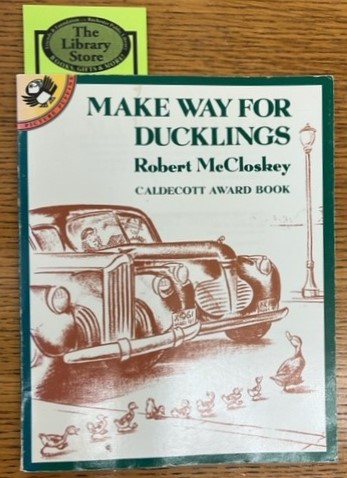
Make Way for Ducklings, by Robert McCloskey (1976) SC, $1
All right. I will admit it. After spending more than 6 weeks pondering the characters and plots of Jane Eyre I was exhausted. So I went looking for a book that was short, fun and uncomplicated. What I found was Make Way for Ducklings.
On a nice quiet island in Boston Mrs. Mallard hatches eight baby ducklings. Mr. Mallard goes off for a week, leaving Mrs. Mallard alone to bring their eight babies to a new location. (Drat, isn’t that just like a man!) Luckily the ducks have made friends with a policeman who helps get them safely to their destination.
Robert McCloskey was both the author and illustrator. He claimed to be an illustrator who also wrote children’s books. Indeed, it is the illustrations that make this book from 1942 such a wonder. His drawings were done in soft charcoal which was unusual for the time. Each duckling is doing something different. McCloskey studied ducks by watching them, talking to experts and visiting museums. He even took 6 ducklings home to his apartment in NYC’s West Village. The end results are amazingly cute drawings that make me laugh each time I see them.
Make Way for Ducklings is the official children’s book of Massachusetts. There was a bit of controversy over this designation, as the politicians from Springfield wanted it to be a book by Theodor Geisel. Happily a compromise was reached. Ducklings became the Massachusetts’ state children’s book, while Dr. Seuss became its official children’s author.
Reading this book made me remember watching a mother duck and her 7 ducklings try to cross the Genesee River outside Rundel Library. Somehow one of her little ones got pushed over the edge of a 4 inch drop. Against the strong current it couldn’t get back up. Momma tried everything, eventually joining it below to try to help it. Then one of the six ducklings on top got too close to the edge and down it went. Now there were two ducklings to worry about! It would be ten minutes before everyone got to a safe dry area six feet away.
Just as I still remember watching that family, you will remember this book’s. Read it, study the illustrations, and you too will fall in love.
Submitted by KB September 2022
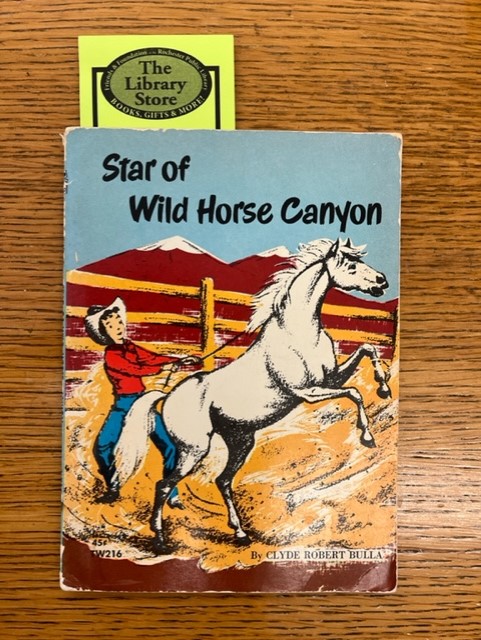
Star of Wild Horse Canyon, by Clyde Robert Bulla (1965) SC $1
Occasionally I gasp when looking at books donated to us. This time it was because I had found a copy of an old friend, Star of Wild Horse Canyon. (My own copy is still in my home library today.)
I remember getting copies of the Scholastic Book Club brochure when I was in elementary school. They were two sheets of paper, with the order form on the back. I would take the pages home to study. When I was ready to buy, I took money from my piggy bank to give to my dad. He would write a check for me to take to school.
I particularly loved books about the ocean, animals or mysteries. One of the Scholastic books still in my library is the story of a WWII tank commander. Why in the world would I buy a book on such a topic? I have no idea. Maybe my dad bought it for me? Ironically that WWII book became one of the books I read to him in his final year at the nursing home.
Scholastic was started in 1920 in the sewing room of the founder’s mother. He printed out a four page magazine that was sold to high schools. Sometime in the 1940s he also started the book club. Scholastic would go on to publish many book series, including Clifford the Big Red Dog, Goosebumps, Baby-sitters and The Hunger Games. Scholastic, though, is best known for having bought the rights to a book about a boy named Harry Potter. Now of course the book club offerings are online, but I would imagine the joy children get from ordering them remains the same.
This book might still be in my library, but I had not read it since I was a child. As an adult I find it rather simple and predictable, but still charming.
Submitted by KB August 2022
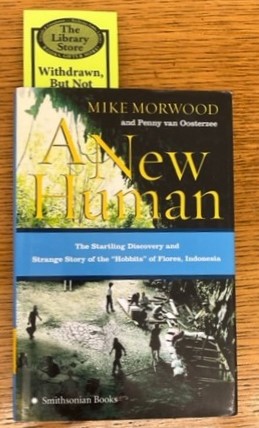 Frodo Lives?
Frodo Lives?A New Human, by Mike Morwood and Penny van Oosterzee (2007) HC $1
Mr. Morwood, the co-director of this Indonesian archeological project, was interested in finding out how Australia and Indonesia were originally settled. He did all the right things. He introduced himself to Indonesian experts, then gathered together an international team to analyze any artifacts found. He developed policies, procedures, and contracts to make sure everyone knew their roles. He got funding. He even swallowed his disappointment that he would be managing the project, not doing the digging.
In October of 2004 archeologists on the site dug up bones of a three foot child. Except the teeth were well worn. So not a child, but an adult? The brain was small, so obviously the “person” was not intelligent? Yet this being, thought to have lived 10,000 years ago, was surrounded by many stone tools and bones of huge animals, which could only have been brought down by skillful hunters. Was this “person” human, or only pre-human?
The question of who would study the bones led to a crisis that revealed only too clearly the fault lines between organizations, individuals and even nations. Of the Indonesians, the most powerful archeologist was of the elite class, with ties to those who fought for Indonesia’s independence. Other Indonesians were knowledgeable but not powerful, or just grad students hoping to make a name for themselves. Mr. Morwood was stunned to find out his main Indonesian colleague planned on turning over the bones to a close friend, even though that person was not part of the project, and was known to deny access to bones in his possession.
Though at first thwarted, that friend did later manage to secretly take the bones. A long time later when the bones were returned, they were found to be heavily damaged. Chaos ensued. Fingers were pointed. The media got involved. Things got really nasty when the Indonesians started talking about “post-colonialism” (meaning race?) and claiming the digging had been done illegally.
By the time of this book, things had quieted somewhat. Since then more bones have been found. They are now thought to be 50,000 years old. Experts, mostly, agree the bones are of a new early human species.
So are they the bones of hobbits? Of course not. But these humans were small, with long narrow feet, and longer arms than legs. No one has yet mentioned fur, but these “hobbits” did spend time in the cave in which they were found. So the name has stuck.
There is so much more I want to write, but I have to stop. This is a delightful and educational book.
Submitted by KB August 2022
 Antony and Cleopatra, by William Shakespeare, the Folger’s edition (2020) SC $1
Antony and Cleopatra, by William Shakespeare, the Folger’s edition (2020) SC $1
Reading Antony and Cleopatra in the Oxford edition made me feel grumpy. Watching the play put on by the Rochester Community Players last week left me feeling a bit better. Getting the Folger’s edition finally restored my tranquility.
Apparently I am not the only one to dislike this play. Even though this play was written at the same time as Shakespeare’s best, it is still considered one of his “problem plays.” Here are just a few cases of what makes this play difficult. Cleopatra is seen as a tricky part to play. (Though the Highland Bowl actress was great.) One of the main characters dies before Act V even starts. (Weird.) The death scene is really funny. (Really weird!) There is also this play’s complexity and length. If done as written, it runs around 4 ½ hours, with 32 characters and an amazing 42 scenes! (Luckily the Highland Bowl production was much shorter and simplified.)
This play deals with two main issues. One is the love between Anthony and Cleopatra, both at the time middle-aged, and with prior relationships. (Cleopatra had slept with at least two other Roman leaders and Anthony was married.) The second part centers on the power struggle between Roman leaders. Alliances are made. Alliances are broken. Again and again. Of course we know Octavius Caesar (later called Augustus) wins.
Some Shakespeare experts claim the play is not historical, but symbolic. How can it not be historical?
Thank you Folger’s Library for an understandable edition. Henry Folger, whose money founded the D.C. private library in 1930, made his money with the Standard Oil Company. This library has not just the world’s largest collection of printed Shakespeare, but also art and rare early English books. Most important to me, Folger’s Library, through Simon and Schuster, publishes Shakespeare books meant for high school students. I love their simplicity. And their most recent editions are larger in size and even easier to read.
I still don’t like Anthony and Cleopatra, but thanks to Folger’s and Rochester Community Players I did find some joy here.
Submitted by KB August 2022
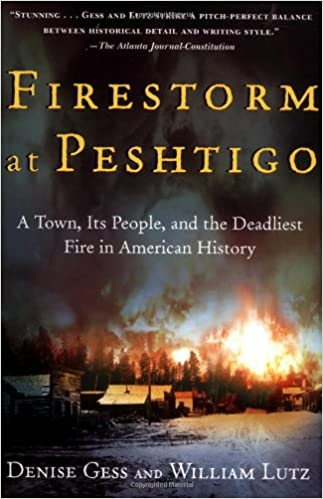 Firestorm at Peshtigo: A Town, Its People and the Deadliest Fire in American History, by Denise Gess and William Lutz (2002) SC, $1
Firestorm at Peshtigo: A Town, Its People and the Deadliest Fire in American History, by Denise Gess and William Lutz (2002) SC, $1
October 8th will be the 150th anniversary of the Great Chicago Fire. Yet on that same day there was an even deadlier fire in Wisconsin.
At that time logging camps were springing up all through the dense virgin forests of north-east Wisconsin. Boom towns, sawmills and farms came soon after. Surrounding the towns and sawmills were massive piles of flammable logs, lumber, and sawdust.
This had been a particularly dry year, yet people still used fire to clear farmland and lay train tracks. Trains sometimes spit out embers as they went by, which also set the land on fire. People accepted the smell of smoke in the air. It was the price of progress.
Unfortunately, a storm was coming. The newly formed Weather Service wasn’t very good yet at forecasting, but even its general warnings didn’t get through because telegraph lines were down. People could feel a storm was coming, but they had no idea of how bad it would be.
Suddenly hurricane-like winds mixed with the fires to produce a fire storm that fed on itself. Fire seemed to come from two directions at the same time. Fireballs would travel miles before exploding and setting new areas on fire. Sometimes fire came from underground because peat was burning in the swamps. Houses would explode after being raised high above their foundations. Some walls of flame were reportedly five miles high. It must have seemed like the end of the world.
Some people sheltered in open areas, in wells or in storm cellars. Most of them died, whether from fire, smoke or lack of oxygen. The author writes that women with their many layers of clothing had especially little chance of surviving. Many people died trying to make it to the river. Even those who made it to water were at risk.
Telegraph wires were down, so help was a long time in coming. Those who had survived helped each other the best they could. For days people wandered around looking for lost family and friends. The fire had been so hot (2,000 degrees F.) that some bodies were unidentifiable or had left no trace. Nearly 2,000 square miles of forest were destroyed, while the estimates of fatalities run from between 1,200 to 3,000. Yet most of us know only of the Chicago Fire, horrible as it was, with its 300 dead.
In this 2002 book Gess wrote, “Most fires are containable [and] controllable…” I doubt she would write those words today. Those were grim days in 1871. These are grim days in 2021. What can we do? There are no easy answers. Reading this scary book made me realize how far we have already come in fighting fire, but also how far we still have to go.
Submitted by KB October 1, 2021
Lindbergh, His Story in Pictures by Francis Trevelyan Miller (1929) HC, $1

In 1929 Lindbergh was the world’s hero. Two years earlier he had flown alone and nonstop across the Atlantic. His navigation had been perfect. The trip, in a plane he designed himself, took less than 34 hours. How did he even stay awake? For a while he seemed to have a charmed life. He was given ticker tape parades and enough medals, keys, and trophies to fill several walls. Crowds followed him everywhere. He married an ambassador’s daughter and taught her to fly. He became the spokesperson for aviation, promoting both aeronautic research and travel. He toured the U.S. with his plane for three months, stopping to speak in 82 cities, one of them being Rochester!
Then he traveled the world.The rest of his life did not go so smoothly. In 1932 his young son was kidnapped. It took ten weeks for the child’s body to be found. Through it all, reporters hounded the family. What a total nightmare! In the 1930s he was impressed by German aircraft. He was also impressed by the Nazi government, and they with him. Hermann Goring would present him with the German Medal of Honor. At home Lindbergh urged Americans to stay neutral in the European conflict. After Pearl Harbor he tried to re-enlist. For three years the army shamed him and said no. They would eventually relent and send him to the Pacific as a civilian.This 300-page book contains very little narrative. I was bored by photos of Lindbergh with important people, but I loved the pictures of ticker tape parades. Amusing are the photos of his first home, car, tree perch and even the buggy he had ridden to school in. Best of all are the photos of him with his plane. Can you believe the plane didn’t have a front window! In order to see ahead he had to look through a periscope!
I liked this book, but a more fun one, though without photos, is his 1927 book, We, unfortunately available only online. In that book I found out that early pilots with no safe place to land would set down on the top of trees. Usually, though the plane would end up in pieces, the pilot would survive. (Gads!!!) Still both pilots in general, and Lindbergh in particular, seemed to be having a whole lot of fun risking their necks on a daily basis. (I must admit I once took a ride in an open cockpit biplane and the experience was surreal. Luckily, we didn’t have to land in any trees!)
Submitted by KB September 30, 2021
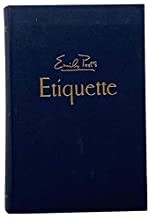 Etiquette: The Blue Book of Social Usage, Emily Post (1955) HC, $1
Etiquette: The Blue Book of Social Usage, Emily Post (1955) HC, $1
Emily Post was born rich. She met her husband, a rich banker, at a fancy ball in a Fifth Ave. mansion. Her life was at first golden. Then her husband started having affairs with chorus girls and actresses. When he was blackmailed the case went to court. By then her husband had speculated and lost most of their money. She had had enough. No one blamed her when she divorced him in 1905. At about that time she began to write novels, articles on architecture, and stories for magazines. In 1922 when she was fifty, the editors of Funk and Wagnalls asked her to write a guide on manners and etiquette for the middle class. Earlier books had been written to help only the newly rich. Now immigrants and other upwardly mobile Americans also wanted to know how to act with grace and confidence at parties, dinners and formal events. By 1932 Post was also writing a daily column published by two hundred newspapers.
Etiquette tells you how to greet either a president or a pope, but it also tells how to give a dinner party without using servants. There is even advice on how to date a woman when she has money and you have none. Values and the consideration of other people’s feelings were more important to Post than money. (So much for her being a snob.) The advice in this 1955 edition of Etiquette is a hoot. At this time salads came after the entre, and cigarettes were passed around after dinner. Mourning clothes, either all white or all black, should be worn only for six months. Lobster could be eaten with the fingers, but not French fries! At a formal dinner you never served butter! It was now proper for people to refuse food in cases of diets or allergies. “Swell”, “And how!” and “You betcha” were ok to say, at least if you were male.
Curl up with this book and enjoy!
Submitted by KB September 30, 2021
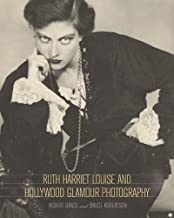 Ruth Harriet Louise and Hollywood Glamour Photography, by Robert Dance and Bruce Robertson (2002) SC, $4For 4 years Ruth Harriet Louise was the head of MGM’s portrait studio. According to Dance, Louise “shaped the basis of stardom, glamour and fashion in the 1920s.” Amazingly she was only 22 when she started. Louise loved to experiment with patterns, textures and the contrasts of light and dark. Her talent was in revealing a subject’s personality while making her look glamorous.
Ruth Harriet Louise and Hollywood Glamour Photography, by Robert Dance and Bruce Robertson (2002) SC, $4For 4 years Ruth Harriet Louise was the head of MGM’s portrait studio. According to Dance, Louise “shaped the basis of stardom, glamour and fashion in the 1920s.” Amazingly she was only 22 when she started. Louise loved to experiment with patterns, textures and the contrasts of light and dark. Her talent was in revealing a subject’s personality while making her look glamorous.
Louise did mostly studio photographs. Some were photos of newcomers to see how they looked in front of a camera. Some were of female stars modeling clothing, or using props and costumes from the films they had just finished. And some were just the stars being themselves. She photographed males too, but MGM always considered them secondary.
Her subjects had to walk up three flights of stairs to get to her. Inside the lights were hot. Film had be loaded and the camera focused before every shot! Some of these shoots went on for hours as costumes and props were changed. How did these photos end up appearing so soft and cool?
Louise processed her own negatives. MGM would make the prints. Some would be sent to newspapers and magazines. Most prints were small and sent to fans. MGM mailed out replies to 32 million fan letters a year! Most would include photos. Some even included photo albums or frames. Studios sure treated their fans well.
This book describes the late twenties as a wild time for the movie business. Movie studies were consolidating. Even so they were in financial trouble. The technology switch to talking movies was massively expensive. Stars still demanded huge salaries. Unions were trying to come in. Then came the 1929 stock market crash. The studios’ east coast bankers mandated huge cuts. At the same time audiences’ taste suddenly changed, so Ruth Louise was out of a job.
Louise’s photos are amazing. The more you look, the more there is to look at. (My only complaint? Most of the photos are in the front half of the book, while most of the discussions of them are in the back. Going back and forth was soon annoying.)
The author focuses on 12 major stars, most of them people I’d never heard of. I found the stories of Garbo, Lon Chaney, and Buster Keaton to be the most interesting. They did their own thing, and were so loved by audiences that the studio let them get away with it.
What a book! What photographs!
(Plus, I can’t wait to watch some of the movies mentioned here.)
Submitted by KB August 9, 2021
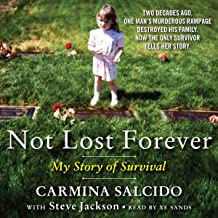 Not Lost Forever: My Story of Survival, by Carmina Salcido with Steve Jackson (2009) HC, $1
Not Lost Forever: My Story of Survival, by Carmina Salcido with Steve Jackson (2009) HC, $1
The writer, Carmina Salcido, came from a troubled family. Her mother, raised by parents in what the author called an ultra-conservative Catholic cult, escaped only by getting pregnant and having to marry her boyfriend. Her father was possessive and sometimes violent, especially as his use of cocaine and alcohol increased. Then her mother learned she wasn’t even legally married. Decisions had to be made.
Early one morning soon after, her father took his three daughters (ages 4, 3 and almost 2) to the town dump, sliced their throats, and pitched their bodies down a ravine. He then drove to four more places to kill his wife, mother-in-law and her two young daughters, and a co-worker, plus severely wounding one other.
Amazingly, three year old Carmina was found still alive 36 hours later. After recovering, she would be put up for adoption by her traumatized grandfather. Her adoptive parents isolated and abused her. To escape she joined a convent where she felt loved, but because of severe emotional problems she had to leave. With no place else to go, she ended up on a ranch for troubled girls, where, according to her, she was again abused.
Finally she was reunited with the grandfather everyone had falsely said didn’t care. She connected with her mom’s family, then her father’s, and later to some of the police and medical staff who helped her after the killings. Belatedly she started to heal, revisiting the places of her early childhood, and writing Not Lost Forever.
This book left me feeling so, so angry. Though there were many people to blame, I am of course mostly angry at her father. (Strangely, this book only alludes to some of the worst things her father was thought to have done.) Was her father mentally ill or just plain evil? I am not a fan of the death penalty, but is this one time when it would be just?
The story of this child touched my soul. So much pain for a little girl to go through! At times I was left feeling nauseous, a rarity for me. But this book is really about redemption. The child, now a woman grown, is dealing with her trauma and connecting to people who care about her.
(Unfortunately, according to the internet, Ms. Salcido has not done well in the 12 years since the book was published. She even has lost custody of her daughter. So are both she and her daughter now “lost”? Meanwhile, Carmina’s father remains on death row at San Quentin.)
Reading this book also made me think of a house on my way to school when I was a child. “Only” four people died there that one morning. A father killed his wife and their two very small children, then killed himself. I didn’t understand it then. And I don’t understand it now.
A sad book, but I am not sorry I read it.
Submitted by KB August 9, 2021
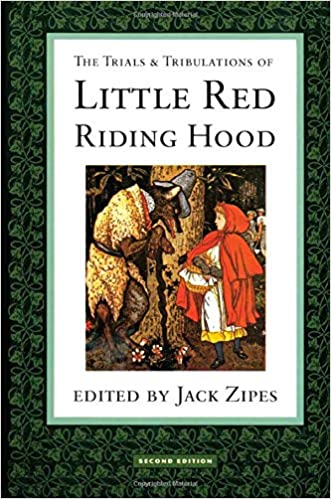 The Trials and Tribulations of Little Red Riding Hood: Versions of the Tale in Socio-cultural Context, Jack Zipes (1983) HC, $3
The Trials and Tribulations of Little Red Riding Hood: Versions of the Tale in Socio-cultural Context, Jack Zipes (1983) HC, $3
Though I read this book a few weeks ago, I find myself still thinking about it. The author first discusses the evolution of the Little Red Riding Hood tale. You then get to read 31 different versions of it and follow the changes.
Zipes first discusses a very early oral French tale told by peasant women. The tale is a rather crude story in which a smart and brave girl saves herself from a werewolf in a delightfully original way. Later in 1697 a French civil servant of the Royal Court wrote down a rather naughty version for adults, where helpless Little Red ends up swallowed. By 1812 the Grimm brothers’ Little Red is still helpless and stupid, but at least she gets to be rescued by a brave hunter. Modern feminists didn’t like this version, so they wrote their own. In one, Little Red undresses the wolf and then falls asleep with him. (Oh, my goodness!)
Zipes is a prolific writer. Many of the books on fairy tales available in our libraries were written by him. I found this book a good starting point because it focuses on only one story.
Zipes talks about werewolves, which during the Middle Ages were thought to be real, so for 200 years men were tried and sometimes executed for killing children while being werewolves. There may also be a connection between the girl’s red cape and the devil, though Little Red didn’t wear a cape, much less a red one, until the written versions came along. I found it strange Zipes considers the story to be really about rape. Hmm, I sort of missed that part.
I was fascinated to learn how the oral tales of the poor were transformed into written ones for the upper classes. The tales then continued to circulate orally, but were heavily influenced by the written versions. Eventually cheap chapbooks circulated the tales to the lower classes. By this point both oral and written forms were migrating even outside Europe. Then the Grimm brothers got involved, first publishing the more raw versions in a book for scholars, then reworking the tales for later editions so they could be read to children. These later books of tales were second in popularity only to the Bible! Meanwhile the tales had also been turned into plays, poems, songs, operas and even ballets.
So why does any of this matter? Bruno Bettelheim wrote that children need fairy tales to process their anxieties in order to overcome them. The problem I have with most of these versions is that a helpless girl isn’t going to learn to overcome anything. There are lots of alternate versions out there, but guess which ones sell better?
I find it sad that movie and television versions have mostly erased the oral telling of these tales. I am grateful to Zipes for opening my eyes to this literature and its history.
Submitted by KB August 9, 2021
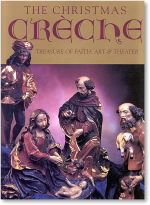 The Christmas Crèche: Treasure of Faith, Art and Theater by Mathew Powell (1997) HC, $1
The Christmas Crèche: Treasure of Faith, Art and Theater by Mathew Powell (1997) HC, $1
Easter, with Jesus’ crucifixion and resurrection, was the only holiday early Christians cared about. Not until 330 CE would Christmas be set as the 25th of December. Christians became more interested in the season of Christ’s birth during the Middle Ages. At Christmas in 1223 Saint Francis of Assisi set up a manger along with a wooden Jesus and a live cow and donkey. He told the story of Jesus’ birth as a poor but human child. The people who saw this reenactment felt increasingly connected to Christ and their faith.
Jesus’ birth has long been portrayed in sculpture and painting. Ox and ass were included from the first. Jesus was usually shown naked. Eventually shepherds appeared in a big way. Magi arrived at the same time as the shepherds. None of this was biblical.
In 1300 crèches with life-size sculptured figures became a big thing in Naples. Both churches and the rich competed to have the best nativity scenes. Then Rome got involved, and so eventually did the rest of Europe. Some cultures had life size puppets. Some paraded statues through town.
When the Reformation struck celebrations suddenly simplified. German Lutherans might still love their trees and carols, but the English Puritans tried, if unsuccessfully, to ban the entire celebration. (In Boston, children still went to school on Christmas day until 1870.)
By the late 1700s Germany was printing lithographed heavy cardboard cut-out crèches. Moravians, who settled a Pennsylvanian town they named “Bethlehem,” put crèches under their Christmas trees. Crèches had now come to the middle class, and to America.
I remember my family’s cardboard crèche. When I was small I loved to lie on the floor and look at our crèche, especially the animals and magi. Such simple, cheap bits of paper, but they reminded me of what Christmas was all about. I am grateful for the memories this book brings back.
This book tries to cover the history of Christianity, Christian art, Christmas and crèches. Wow, that’s too much, but I still learned a lot and had fun doing so. I loved that the photos were so large I could see the details of these beautiful crèches.
Submitted by KB January 2, 2020
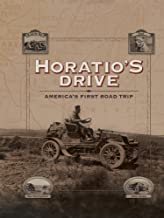 Horatio’s Drive: America’s First Road Trip by Dayton Duncan and Ken Burns (2003) HC, $4
Horatio’s Drive: America’s First Road Trip by Dayton Duncan and Ken Burns (2003) HC, $4
(This is the companion book to Ken Burns’ documentary.)
Most people thought cars were only a “passing mechanical fancy” and would never be able to go long distances. Horatio Nelson Jackson disagreed. He made a bet he could drive from San Francisco to New York in 3 months. The whole idea was ludicrous. Ninety six percent of roads were only dirt. There also were no such things as maps, route signs or filling stations. If you ran out of gas you walked into town and tried to buy some at the general store.
Cars had a limited number of parts. If a part broke, either you fixed it, or a blacksmith did. If that did not work, you ordered the part from the closest city, or maybe from the manufacturer. Then you waited for it to arrive by rail or stagecoach. There was also the problem of getting stuck. This might happen more than ten times a day. If you couldn’t get yourself out you hoped someone came by with a horse.
Jackson left only four days after making his bet. He had several things going for him. He was very determined and optimistic (and maybe crazy?). He hired the right mechanic to go with him. And he had a supportive rich wife. But the only car he could get already had over 1,000 miles on it, and much worn tires. He couldn’t get any new tires, so he just left with what he had. Gads!
The telegraph let townsfolk know he was coming. Many of these people had never seen a car before. Businesses and schools were closed in anticipation of the car’s arrival. Reporters were waiting to talk to him if he stopped.
Shortly after he left two other cars started out after him. These trips, with professional drivers and corporate backing, had been carefully planned for months. The race was on.
This is a great story. Included are the photos Jackson took along the way with his small Kodak camera, and the love letters he sent ahead to his wife. What a gem! So did he win the bet? Did he even reach New York? You’ll have to read the book to find out.
Submitted by KB January 2, 2020
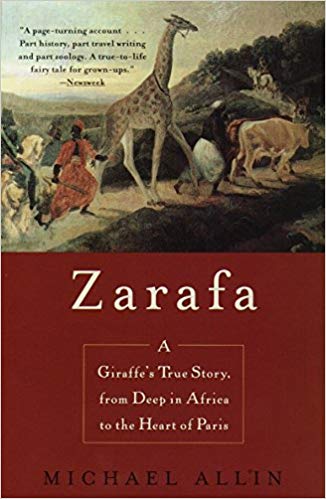 Zarafa: A Giraffe’s True Story, from Deep in Africa to the Heart of Paris by Michael Allin (1999) sc, $2.
Zarafa: A Giraffe’s True Story, from Deep in Africa to the Heart of Paris by Michael Allin (1999) sc, $2.
Muhammed Ali ruled Egypt from 1805. He took over Napoleon’s printing press, and announced that printing was longer forbidden to Muslims. Napoleon’s former soldiers would become his soldiers, administrators, economists and diplomats. Other Europeans would come to build bridges, dams, and factories. He provided education and health benefits for his people.
Ali would go on to capture Medina, Mecca, Sudan and Syria. This book says he financed this all with high taxes and the slave trade. Other references mention his nationalization of land, but not the slave trade. I don’t know enough to tell which is right.
Charles X was then King of France. Ali needed a European ally if he was going to keep the lands he had conquered, especially as Greece was fighting for independence from him. To impress Charles, and to gain his support, Ali came up with the idea of sending Charles a giraffe.
In 1827 a two month old giraffe named Zarafa was captured in Ethiopia. She would ride on camels, then sail down the Blue Nile to Alexandria. From there Zarafa would cross the Mediterranean by ship – her head sticking out of a hole cut in the ship’s deck! From the French port of Marseille she walked, sometimes through snow, the 550 miles to Paris.
A giraffe had not been seen in Europe since Roman times. French civilians went crazy over this gentle giant, who was prone to lick your face if you got too close. She got used to crowds and noise. She would end up living in the Paris Zoo for the rest of her life. And no, Charles X never did help out Egypt’s tyrant.
During the French Revolution the royal menagerie was destroyed as a symbol of tyranny. Only a hippo, a lion, and three small animals were left. They too were supposed to be killed until one very brave man pointed out that the animals were really a symbol of liberation, and should be treasured. Those five animals were the start of the modern Paris Zoo.
I loved this book. I still am in love with Zarafa! They are both a treasure.
Submitted by KB January 2, 2020
 The Christmas Tree at Rockefeller Center by Carla D’Agostino (1997) HC, $1
The Christmas Tree at Rockefeller Center by Carla D’Agostino (1997) HC, $1
The first tree at Rockefeller Center was bought with money collected from construction workers glad to have a job in the midst of the Depression. This 1931 construction site tree had no lights, but was decorated by the workers’ families with paper garlands, cranberry strings and a “few empty tin cans”. Two years later the first official tree, decorated with 700 blue and white lights, would be put in its now traditional space.
Each year since a tree, selected by July 4th, is pampered with fertilizer, pruning and extra water. Come November workers arrive to “corset” the tree by individually wrapping the lower limbs. A huge crane supports the tree while it is cut, then lowers it to a flatbed truck. Once in New York City, scaffolding is put around the tree so electricians can wrap the limbs in lights. At the time of this book’s publication (1997), it took two weeks for 25 electricians to put up the tree’s 26,000 lights on 5 miles of wire. This year’s tree had a whopping 50,000 lights.
The lighting of the tree is a televised extravaganza. The festival includes skating on the ice, celebrities, music and choirs, and of course dancing by the iconic Radio City Rockettes. Strangely, Rockefeller Center’s ice rink was a last minute addition to the building project.
Each year the area’s decorations and lights change. During WWII, because of blackout regulations, there were no lights. After the war the number of multi-colored lights exploded. After 1969 lights were changed to miniature ones. By 2007 the lights were LEDs.
I’ve never seen the Rockefeller Christmas Tree. I did see Rockefeller Center once when I was six. Mostly I remember being terrified by there being everywhere noise, lights and people. Mind you, this wasn’t even Christmas! At least I have this book to show me what I missed by not going at Christmas time.
I wish this book was organized more chronologically, but I still enjoyed it, and even more so the second time around.
Submitted by KB January 2, 2020
 The Great Chicago Theater Disaster (Memorial Edition): The Complete Story Told by the Survivors by Marshall Everett (1904) HC, weak binding but otherwise in nice condition, $8
The Great Chicago Theater Disaster (Memorial Edition): The Complete Story Told by the Survivors by Marshall Everett (1904) HC, weak binding but otherwise in nice condition, $8
In 1908 a Chicago theater caught fire. Over 600 died. Most were women and children. It was Christmas time, and people from all over the Midwest had come to attend the newly opened “fireproof” Iroquois Theater.
The fire started in the ceiling when a floodlight sparked. The fire curtain was late in being lowered and then got stuck, leaving an 8 foot gap of open air. In escaping, performers left two doors open at the back of the stage. Air from the outside rushed in. It mixed with the flames, smoke and hot air above the stage. A ball of fire was created which rushed under the fire curtain and up the ceiling to engulf both balconies. Fifteen minutes after the fire started most people left on the upper floors were already dead.
Of the people on the first floor who survived many were severely burned or trampled. There was only one real exit at the front. The other 19 exits were either concealed, locked or opened inward.
So many people were to blame. Fire inspectors had falsified reports. Owners had saved money by installing a “fire curtain” made of wood. Venting that was to carry flames and hot air outside through the roof had been nailed shut. Fire escapes had no access to the ground floor. Even though fires happened frequently in theaters, the Iroquois had had no fire drills. Some employees had even refused to open doors to let people out!
In the end no one was punished, but at least laws were soon changed to make public buildings safer. No longer are standing room tickets sold. Emergency doors open outward, and there are a lot of them. Exit signs are always lit. Theaters plan for evacuation.
This book was written shortly after the event happened when a lot was not yet known. The quality of the photos and drawings is poor. Witness statements are put together in a disorganized manner. None of that matters. How could this fire have been forgotten? Visions of children’s bodies ten deep inside locked doors haunt me still, but I am glad at least to know this story.
Submitted by KB December 8, 2019
Walter Meyers’ books available in our bookstore at the time of this writing (please note: store inventory changes constantly each day)
Meyers has won an impressive 5 Coretta Scott King Awards. His books realistically portray city street life, including its gangs, teen pregnancies, drugs and violence. Some libraries feel his books are too real for children to read, and have banned them. (If only we could ban street violence so easily!)
Meyers did not have an easy life. His mother died when he was two. He was raised by people who took him to Harlem. The family had little money. His father was secretly illiterate, but his mother, who had taught herself to read, read to Meyers every night. Though Meyers was smart, loved books and attended a magnet high school, he had few friends. A speech impediment caused him to be teased, and to get into fights. In 1957 he dropped out of school at 17 to join the army.
Three years later, after returning from Vietnam, Meyers felt lost. He remembered a former teacher had told him to write, so that’s what he did. When he had been in school there were no books about young black urban men, so Myers started writing his own. He later wrote, “A turning point for me was the discovery of a short story by James Baldwin about the black urban experience. It gave me permission to write about my own experiences. Somehow I always go back to the most turbulent periods of my own life. I write books for the troubled boy I once was, and for the boy who lives within me still.” He would go on to write more than 100 books.
In 1994 Dennis Vellucci commented, “In Myers’s characters… [Black men] see their own concerns explored and struggles resolved, and recognize the value of the kinds of relationships Myers portrays as the means by which they might grow strong and survive.”
Motown and Didi was his first book to win the King Award. I felt uncomfortable with its harsh reality. I never got past the idea of a hero living in an abandoned building, but that is my fault not Meyers. Read his books and see what you think.
Submitted by KB December 8, 2019
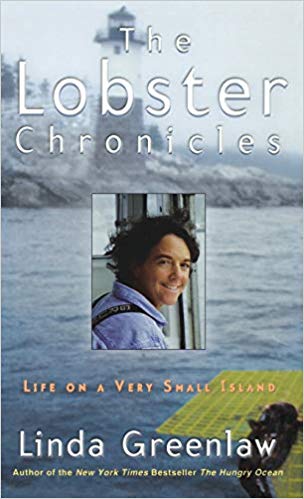 The Lobster Chronicles: Life on a Very Small Island by Linda Greenlaw (2002) HC, large print, $1
The Lobster Chronicles: Life on a Very Small Island by Linda Greenlaw (2002) HC, large print, $1
This book is more about people than lobsters. What is it like to live on a tiny, isolated island where everything evolves around the lobster harvest? The author sees herself as an outsider, because she has been home for only five years. The 17 years before that she was away fishing for swordfish.
She has bought a boat, gotten her retired dad to help her, and has become a lobster fisherman. In Maine the lobster season runs each year from late June to December, though that doesn’t mean there are necessarily any lobsters to be had. Until they do arrive, the fishermen still have to go out and work a long hard day, even if they catch nothing. Meanwhile bills still need to be paid. This is not an easy life.
Neither is living on a tiny island. When she writes this book there are 70 adults and 7 children living full time on the island. Anyone going to high school has to go live on the mainland. Anyone with health problems has to go live on the mainland. Rich people come in the summer to cottages some have had for generations. There is one B&B. No one wants any more tourists, but where is money to come from?
Life is expensive. All supplies have to be shipped to the island. Real estate values are going up, so also are taxes. All this while the numbers of lobsters are decreasing. The islanders resent the competition from non-islander fishermen, yet what can they do?
Reading this book I came to really care about the author, her family and her community. They are trying to figure out not just their own lives, but also how to save their community. To me it seems obvious the community is doomed. There are just not enough people, and not enough lobsters to support the economy. This author has now written more books, and is famous. Will that make enough of a difference in the economy to save this group of courageous people? I doubt it, but I sure hope I am wrong.
Submitted by KB December 8, 2019
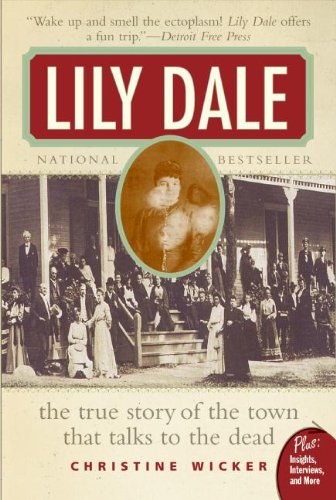 Lily Dale, Where People Talk To the Dead
Lily Dale, Where People Talk To the DeadThe True Story of the Town that Talks to the Dead by Christine Wicker (2003) s.c., $1
Lily Dale, located an hour south of Buffalo, is unique. Lily Dale is where you go to be surrounded by mediums and psychics. Some of those who travel there each summer are in pain, and desperately hoping for messages from loved ones who have died. Other visitors are curious, or just want to have fun.
Wicker was up front about being a reporter writing a book. She interviewed both those living in Lily Dale, and those just visiting. Surprisingly her book was also the story of her own life crisis. Did she really want to write this book? Did she really want to be a journalist at all? Was there a purpose to life? Would her time in Lily Dale change her?
Wicker writes with incredible honesty. She was always feeling pulled between hearing amazing stories, and even having some amazing experiences herself, and then observing other things that she knew impossible and absurd. Were the people at Lily Dale crazy? Fools? Just exaggerating? Maybe they were complete frauds trying to milk vulnerable people of their money? Or were some of them really in communication with the dead?
There is a lot of disagreement among those who live in Lily Dale. A lot of what goes on there makes even people who live there roll their eyes. There are, however, three general beliefs. Everyone is wonderful. Everyone has psychic abilities. And everyone can do anything one wants to. (There is no sin, and no hell.) Sure sounds crazy, doesn’t it? Yet some people find healing there. Others end up asking themselves hard questions, and learn something in the process. While others just have a good time.
What do you think of all this? Read this book and you may end up in a slightly different place than when you started. At least I did.
Submitted by KB September 30, 2019
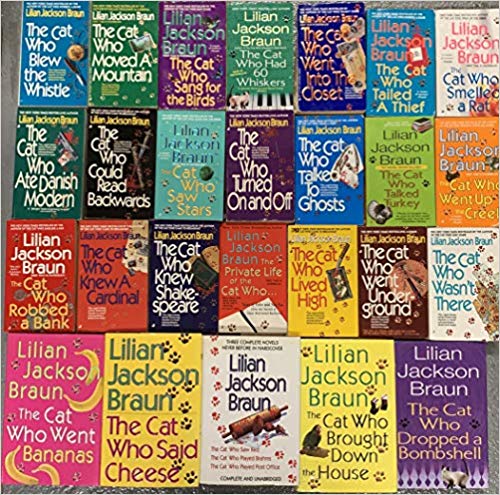 Mysteries by Lilian Jackson Braun
Mysteries by Lilian Jackson BraunJust arrived- More than 10 The Cat Who mysteries by Lilian Jackson Braun. Mostly paperback, but also some hardcover. All are in excellent shape. All for only $1.
In this mystery series a former newspaper reporter is the real sleuth, but his two Siamese cats, Koko and Yum Yum, are still actively involved in helping to solve cases. At least they are when they are not busy eating, grooming, playing or throwing up hairballs.
Braun published three mysteries between 1966 and 1968, but then stopped. Upon her death, Penguin Books quoted her in its obituary, “By the time I had written the fourth one, tastes in mysteries had changed. They wanted sex and violence, not kitty-cat storied. Gore was not my style, so I just forgot about The Cat Who. I had a full time job on a newspaper and it was exciting, and I had a wonderful social life, so who needed it.”
After she retired in 1984 her husband encouraged her to return to writing. Her fourth mystery was published in 1986. She continued writing till 2007 when her 29th and last Cat novel was published. She died 4 years later at age 97.
You probably have to really love cats to like these mysteries. I like cats but not enough to enjoy Braun’s books. But many people do love these “cozy and happy” mysteries. So come in and see what we have for sale.
(Please note: not every title pictured is available in the Library store).
Submitted by KB September 30, 2019
Just arrived- More than 10 Inspector Richard Jury mysteries. Most are paperbacks, but also some hardcovers. All in excellent condition. All only $1.
I have always liked Chief Inspector (eventually Superintendent) Jury mysteries. I love the plots. I also love Jury’s interesting friends and colleagues. Sergeant Wiggins, of course, is a great sergeant, but a terrible hypochondriac. Jury’s friend, Melrose Plant, is an aristocrat who, though no longer uses his title, still lives in a great house. He’s a little strange. And then there is Plant’s aunt who is always trying to steal his silver. Jury himself is still single, I do wish he would find himself a mate, but after all this time it is unlikely.
Martha Grimes had her first book published in 1981. An editor at Little, Brown and Company did what no editor ever does. He took her book from a pile of unsolicited manuscripts, and decided the book was good enough to publish. Only 3,000 copies were published in that first printing, but Grimes was on her way. Her 24th book, The Knowledge, was published in 2018.
Grimes has also written books in two smaller series, as well as a memoir dealing with alcoholism that she co-wrote with her son. In addition, she has become an advocate for animal rights. Strangely enough she lives, not in London, but in Bethesda, MD. Twice a year she crosses the Atlantic to scout out an English pub, whose name she will use as the title of her book. She then spends time getting to know the area, but goes home to write. I had no idea she was not English! Color me shocked! How can she write so convincingly of Britain and Scotland Yard?
Whether you are a long time enthusiast, or new to Grimes’ books, be sure to grab one of these great mysteries located on the top shelf of the mystery section (or in the Library itself, if the store sells out).
Submitted by KB September 30, 2019
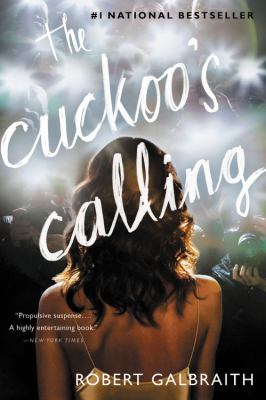 Instead of Harry Potter, Murder?
Instead of Harry Potter, Murder?The Cuckoo’s Calling by Robert Galbraith (J. K. Rowling) (2013) sc, $1
Strange, but I never liked Harry Potter, so I was skeptical about reading this mystery. Still, I was curious. Surprise, surprise, Cuckoo’s Calling is one of best mysteries I have read all year.
While reading it I had a feeling of déjà vu. I am still not sure why, but the writing made me think of the classic mysteries from the 1940s.
I also had a strong impression that this was, in part, a retelling of the classic Beauty and the Beast story. Robin, a beautiful woman, is on her way to a temporary job as a receptionist. She has just gotten engaged. Her ring is huge, and now she finds she will be working for a private eye. Best day ever!
Unfortunately she hasn’t met her boss yet. Rowling describes Strike as “huge” and “hairy”. He has scratches down one cheek, and an eye that is swollen shut. There is blood on his shirt. He needs a bath. Unbeknownst to her, he is disabled, both physically and emotionally, deeply in debt, and recently homeless. He hasn’t had a client for 3 weeks. He may not want her there, but after accidentally almost pushing her down a flight of stairs he lets her stay.
In walks a client, a rich client. Strike can’t believe it. The only problem is that the client wants his sister’s death investigated, though likely there is nothing left to investigate. When a celebrity model plunges to her death the police look into every angle. But of course Strike does take the case, and off we go.
Rowling was careful to keep this book a secret. Cuckoo was published in April of 2013. Not until July did people know Rowling was really the author, and then only because of a leak from her law firm. (They paid heavily for that “oops”.) Once Rowling was known to be the author her book soared to #1. Now there are a total of four books in the series. Maybe she really is a good author?
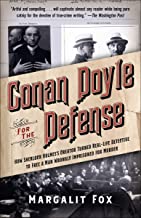 “Conan Doyle, Please Help Me!”
“Conan Doyle, Please Help Me!”Conan Doyle for the Defense: the True Story of a Sensational British Murder, a Quest for Justice, and the World’s Most Famous Detective Writer, by Margalit Fox (2018) HC, $5
Oscar Slater was convicted in 1908 of brutally beating to death an 84 year old woman. He was supposed to have stolen her diamond pin, though his pin was nothing like the stolen one. He was supposed to have used a hammer, but the one he had was tiny. Two witnesses identified him, though their initial descriptions were not even close to what he looked like. There was never even any proof that Slater had known the victim. Still he was convicted and sentenced to life in prison.
Slater was not a nice person. He was arrogant, a professional gambler, and possibly a pimp. More importantly, he was a German immigrant and a Jew, at a time when immigrants and Jews were seen as scary.
So where does Conan Doyle come into all this? After 17 years in prison Slater was desperate. He managed to smuggle a letter to a friend being released on parole. That friend smuggled out the letter under his dentures, then trekked all the way to Doyle’s home to deliver it. Amazingly, though Doyle despised Slater as a person, he was already certain of Slater’s innocence. Slater had not known, but ten years earlier Doyle had written a book severely criticizing Slater’s trial.
Eventually Slater would be released from prison. He would have a new trial, which almost ended in him going back to prison. Later Doyle and Slater would end up publicly hating each other. No one was ever charged, though many, including Doyle, were sure of who it was.
I wish I had space to write more, especially about Conan Doyle, and how he sometimes solved criminal mysteries in much the same way Sherlock Holmes did. This is such a wonderful book. I am buying copies to give as gifts. You can have this one for only $5
Submitted by KB September 15, 2019
A Long Fatal Love Chase by Louisa May Alcott (1997) SC, $1
Louisa May wrote a gothic? Actually, yes she most certainly did.
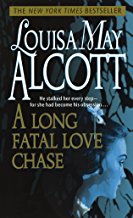 A Long Fatal Love Chase, written two years before Little Women, was rejected as too long and too sensational. Even when she toned it down the publisher still rejected it, so she put it away and moved on. Later the toned down manuscript went to Harvard, was mislabeled and forgotten. The original manuscript, though, was eventually put up for sale by the Alcott heirs. Bought by a New Hampshire school headmaster, it was restored, and published by Random House in 1995
A Long Fatal Love Chase, written two years before Little Women, was rejected as too long and too sensational. Even when she toned it down the publisher still rejected it, so she put it away and moved on. Later the toned down manuscript went to Harvard, was mislabeled and forgotten. The original manuscript, though, was eventually put up for sale by the Alcott heirs. Bought by a New Hampshire school headmaster, it was restored, and published by Random House in 1995
The heroine Rosamond lived on an island alone with her cold-hearted grandfather. Who can forgive her for wanting to escape- though offering to sell her soul “to Satan for a year of freedom” may have been a bit unwise. Nor was it wise to fall in love with Tempest, the man who shortly after her offer “just happened” to visit. She marries, only eventually to find her luxurious life a prison. Never willing to play the victim Rosamond escapes and moves on, only to be found time and time again by the obsessed Tempest. This is not your usual gothic romance. The heroine is too independent, the villain too creepy, and the ending…. No wonder Alcott couldn’t get it published.
Reading this book is a way to see Alcott from a different perspective. She enjoyed writing this more than she did Little Women. Little Women, though, would bring her fame. Since she supported not just herself, but also her parents and siblings, financial stability was important. Supposedly 50% of the profits from this newly published book go to her heirs and her museum. So ironically even if writing Chase did not help her family then, it sure does now.
Submitted by KB August 29, 2019
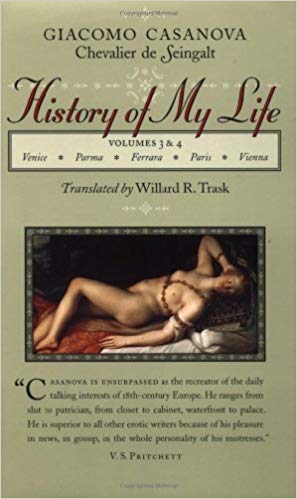 History of My Life, Volumes III and IV (Venice Parma, Ferrara, Paris, Vienna), by Giacomo Casanova (1997) SC, $1
History of My Life, Volumes III and IV (Venice Parma, Ferrara, Paris, Vienna), by Giacomo Casanova (1997) SC, $1
I really didn’t expect to like Casanova’s History of My Life. For starters his complete work is over 1,000 pages long. (Really?) This book, parts III and IV, take up only 323 pages.) Without this autobiography no one would know of him. Of course scholars say his account is the best social and cultural description of the times. He knew all the important people of the 1700s, including Voltaire, Mozart and Ben Franklin. He was trained as a lawyer, wrote an essay on mathematics, translated the Iliad, gave a violin concert, traveled widely and was even a spy. Mostly he was a con-artist and gambler. Yes, he did write charmingly, but without all those 120 women I don’t think anyone would care.
I made it through three chapters before quitting. His womanizing wasn’t the problem. His trying to con people out of money was. He breezed through life with no care for the people he hurt. Strangely he supposedly left most of his women happy. He did love them, and they knew it.
Eventually Casanova’s cons, seductions, gambling and debts led him to prison. After escaping from prison he eventually slowed down. In his last years he was, of all things, a librarian. Being bored he wrote his memoirs. After his death they were sold to a German company that kept the original pages locked up, and published only a censored version which was then badly translated by others. The original manuscript barely survived WWII bombs. (Churchill was said to have been concerned.) Finally, complete French and English editions were published in the 1960s, just in time for the sexual revolution. (Interestingly, while researching his life I found only a one line reference to him in any book published before 1960.)
This autobiography was not my cup of tea. Perhaps I didn’t read long enough to get to the good parts?
Submitted by KB August 29, 2019
By Walter D. Edmonds (1964) HC with a beautiful DJ, $1
For two years the novel Drums along the Mohawk was the number one New York Times bestseller. Finally a little book called Gone with the Wind pushed it off its perch. One year later in 1939 John Ford based a film on Edmonds’ book.
At that time people kept insisting Drums was non-fiction. It wasn’t but Edmonds certainly had done a lot of research. A Harvard graduate, he wanted to get right all the details of everyday life. (He hadn’t liked that Fennimore Cooper had gotten things wrong.) I would have liked to know more about Edmonds, but I could find no biography out there.
In the novel Gil Martin had just brought his bride to the frontier during the time of the American Revolution. Though new to pioneer farm life she was brave, a good sport and able to manage when left on her own. What struck me as realistic was how the two of them had to figure out their relationship in the midst of extreme hard work, crop failures, loneliness, war and pregnancies. In the novel the pioneer society was divided and complex, and life confusing, which was much closer to the truth than Ford’s movie made out.
The book’s treatment of natives is appalling. In both the book and the movie only one Indian is not evil. This only good one, a Christian Oneida, is still described as greasy, smelly and dirty. The movie actor playing the Oneida character gets to call the Senecas the worst of all Indians. Ironically that same actor was a Seneca. More ironically, the enemies in the movie are Indian, not mostly British as in the book. In 1939 Ford was not about to make a movie where Britain was portrayed as the enemy.
I find it interesting that when this novel takes place Rochester won’t even be a village for 41 years.
This isn’t my favorite book, but it is a modern classic. Read it and see what you think.
Submitted by KB August 29, 2019
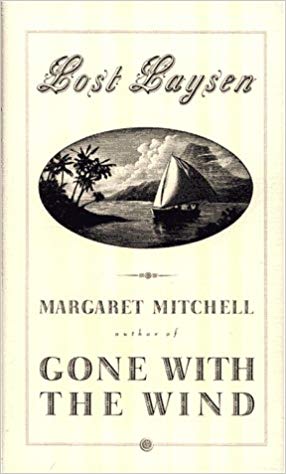 Lost Laysen by Margaret Mitchell (1996) HC, $1
Lost Laysen by Margaret Mitchell (1996) HC, $1
On August 16th Margaret Mitchell will have been dead for 70 years. She was known to have written only one novel, the Pulitzer winner, Gone with the Wind. When she died Mitchell wanted all her papers burned, and they were. All her letters, journals, notes, and even the original Gone with the Wind manuscript- all gone. Nothing was left… or so it was thought until 1994 when the son of a man who knew her came to the Gone with the Wind museum wanting to sell some papers. Could these letters, photos, and – gasp- a novella really be hers?
That friend, Henry Angel, a man barely mentioned in the known records, had known her since childhood. Supposedly he had repeatedly proposed to her. Supposedly she repeatedly had said yes, and even wore his ring. But though she married twice, it was never to him. Regardless, it was to him that she gave her manuscript of The Lost Laysen, a novella she had written at age 16.
The tale itself, which I loved, is of unrequited love in the South Pacific. I can see some major similarities to GWTW, but literary experts say there are a lot more.
This book includes not just the novella, but also her letters and photos. It is clear she loves mugging for the camera, and having five men chase after her. She writes of chaperoned parties, of being ill, or bored. She writes of borrowing money which she never pays back. But she also writes of feeling sad on seeing a WWI soldier’s coffin waiting alone on a train platform. Through her words and the photos she comes across as independent, sassy and full of life. Well, this was the Roaring Twenties.
So many questions remain. Why did she have all her papers burned? Why did she not marry Henry Angel? Why did she give him her novella? Why did he keep both it and the relationship a secret his whole life? We’ll probably never know the answers.
Submitted by KB August 14, 2019
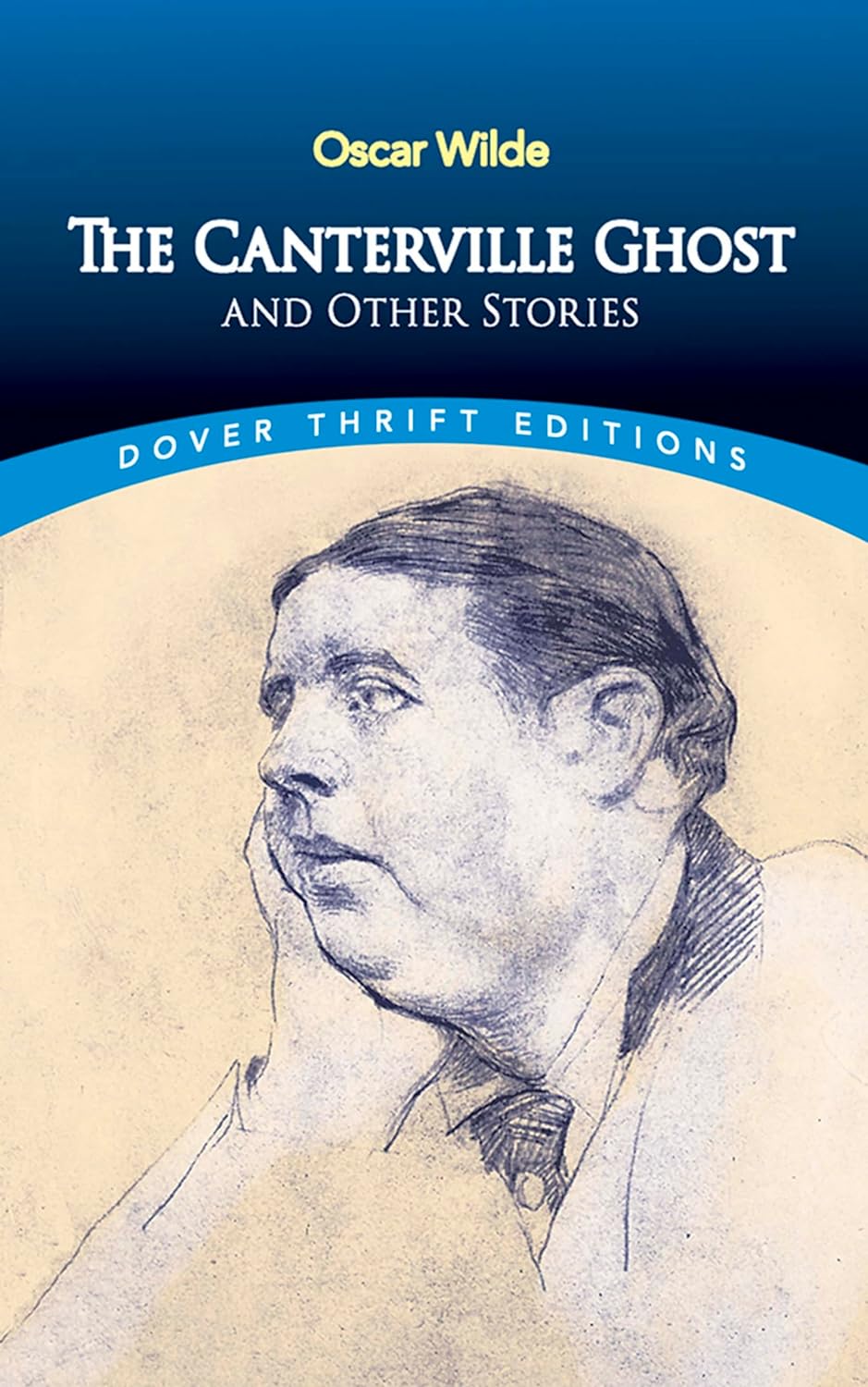 Oscar Wilde’s Strange Ghost Story
Oscar Wilde’s Strange Ghost StoryThe Canterville Ghost and Other Stories by Oscar Wilde (2001), sc, $1
Lord Canterville has decided to sell his ancestral home. For three hundred years it has been haunted by Sir Simon, a ghost who loves his job. Lord Canterville is an honest man, and has warned his home’s rich new American owners of the problem. Over the years Simon has terrorized almost everyone- the Cantervilles, their visitors, their employees, and even the rector. Most were never the same again.
Sir Simon awaits the arrival of the new owners with glee, but all does not go as planned. Simon clanks his chains. Mr. Otis, the rich American, offers him a bottle of Tammany Lubricator. Simon shrieks. Mrs. Otis offers him medicine to cure his indigestion. The young Otis boys hit him with pillows and douse him with water. And on it goes. Poor depressed Simon continues to haunt the house, only now he oils his chains, wears soft slippers and tries to avoid everyone.
How the story ends is charming and totally unexpected. Oscar Wilde’s life also had an unexpected ending, but it was a tragic one. Wilde was a great writer- of plays, poems and the novel, The Picture of Dorian Gray. His conversation was considered the wittiest of his era, the late 1800s. His flamboyant dress and behavior set him apart. Both the American and British elites adored him. Then at age 39 he fell in love with a male undergraduate aristocrat. Neither was at all discreet. Soon Wilde would also be involved with two young male prostitutes. Said Wilde, “Danger was half the excitement.” Convicted of “gross indecency”, he served two years of hard labor. When released he moved to France and died penniless at age 46. He left behind writings full of wit and humor. One wonders what else he would have written if he had been a bit more careful. He paid dearly for being different.
Submitted by KB August 14, 2019
 Marcia of the Doorstep by Edgar Rice Burroughs (1999) HC, $1
Marcia of the Doorstep by Edgar Rice Burroughs (1999) HC, $1
Tired of Tarzan? His author, Edgar Rice Burroughs, surely was. He wanted to write more mysteries, historical romances and westerns, but his editors only wanted Tarzan. His granddaughter wrote, ”Sometimes the only way that he could sell something else was to promise the editors another story about the inimitable Tarzan.” After being unable to get Marcia published he gave up attempting to write a novel that wasn’t science fiction.
Many later science fiction writers credit him as their inspiration. Bradbury wrote that Burroughs’ introduction of romance and adventure to boys “caused them to go out and decide to be special.” Some of those “special” children would go on to invent what Burroughs had only dreamed about.
In his early years Burroughs was a drifter, and only able to hold jobs for short periods of time. This was hard on his wife and family. Reading pulp fiction helped him escape his anxieties, but he thought the writing was “rot.” He would try to write his own stories!
He never thought of himself as a great writer, but turning his daydreams into imaginative action stories made his financial problems go away. Incredibly he even became a smart businessman, selling the serial rights of his stories to pulp magazines, but keeping reprint and book rights for himself. He was also one of the first writers to branch out into comic strips, radio shows, movies, television, and merchandise.
This novel is filled with blackmail, a baby left on a doorstep, a shipwreck in the Pacific, movie filming, a villainous lawyer, self-sacrifice and of course romance. Note, written in 1924, some parts are offensively anti-Semitic.
Tarzan of the Apes may be more unique, but Marcia of the Doorstep, finally published in 1999, is still a fine adventure.
Submitted by KB August 14, 2019
Have you ever wondered about those little hardcover classics in small print with a man carrying a torch on the inside cover?
In 1917 the publishers of The Modern Library started to sell Americans cheap reprints of mostly modern European works, along with a few American ones. The series sold well, but when its owner needed money, he sold the company to his 27 year old employee and a friend.
The new owners would start the series again in 1925. They introduced as its symbol Prometheus, the Greek torchbearer who brought enlightenment to mankind. According to the Modern Library website: “They added more American writers to the series and some older classics, and two years later, finding that they had time to spare, they started Random House as a subsidiary of the Modern Library. Random House enabled them to publish, ‘at random’, other books that interested them. It soon was a major publishing force in its own right, and the Modern Library would become an imprint of its own offspring.”
Wow, so those inexpensive little books gave rise to Random House? Who would have guessed!
Examples of this series can be found in the classics section of the bookstore.
Note: In 1998 the editors of Modern Library held an internet poll to create the “Modern Library List of Best 20th-Century Novels“. According to Wikipedia’s account of a New York Times article, “executives at Random House said they hoped that as the century drew to a close their list would encourage public debate about the greatest works of fiction of the last hundred years, thus both increasing awareness of the Modern Library and stimulating sales of novels the group publishes.” Except when the list came out no one was happy. The winning authors were mostly American or English men, and more importantly, lesser works rated higher than truly great ones. Well, what could one expect if people were allowed to vote repeatedly, up to once a day, for their favorites!
Submitted by KB July 25, 2019
Combination sets of children’s books with CDs
Only $0.50 for each set!
Find them in the children’s section
(Put out by Scholastic, a quality publishing firm)
Submitted by KB July 24, 2019
Where They Fell: Stories of Rochester Area Soldiers in the Civil War, by Robert Marcotte (2002) HC, new, still in wrap, $8
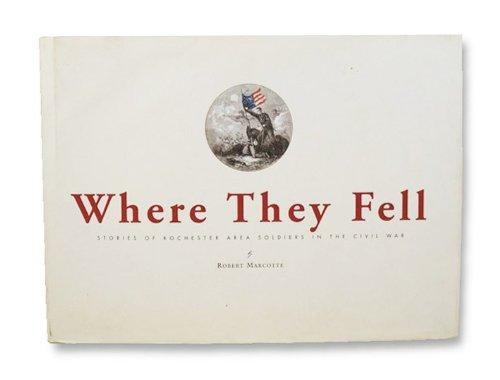 Robert Marcotte wrote this book in only four years. I wonder how it didn’t take longer. I am so impressed. Somehow he has both told the general story of the Civil War, and Rochester’s role in it. What makes this book so special are the stories of local men. Some are only briefly mentioned in the text, or in a caption below a photo, but others get several pages.
Robert Marcotte wrote this book in only four years. I wonder how it didn’t take longer. I am so impressed. Somehow he has both told the general story of the Civil War, and Rochester’s role in it. What makes this book so special are the stories of local men. Some are only briefly mentioned in the text, or in a caption below a photo, but others get several pages.
Marcotte describes how battles occurred, and what the consequences were. Somehow he manages to get all kinds of battles and events included. The best way to find your way through this book is by using his table of contents, which is really a timeline of the war, with photos from the battles marching across the upper third of the page, with the articles, maps and discussions of local soldiers listed underneath. Creative! Of course you can also use the book’s index for specific items.
There’s some pretty obscure stuff in here. Of course I am not a Civil War buff, but a lot of the actions on the Atlantic Ocean, the Mississippi River, and in the West were new to me.
Throughout the book are summaries of specific battle regiments — when they were started, where they were recruited from, where they fought and when they mustered out. Also, how many died — in action, of wounds or of disease. I was especially struck by all the places where recruiting took place. All those little towns! I know Lima, Avon and Conesus. But what about Java, Allen and China? Reading all those unknown names made me realize just how many Civil War soldiers came from farms and tiny towns.
These are beautiful books, and they are new! They would make great gifts. Or buy one for yourself. There are copies on both the A frame and inside the Library store.
Submitted by KB July 23, 2019
Sweet Gift of Freedom: A Civil War Anthology, volume I, edited by Shirley Cox Husted, Monroe County Historian (1986) 92 page pamphlet, $2. (Multiple copies are available.)
While honeymooning in the south Shirley Husted saw a white man severely beat a black field worker. That terrible sight made her realize the importance of civil rights, and lead her to research Rochester’s part in the Civil War.
This pamphlet seems disorganized and rambling. The photos are grainy and dark. It’s not an easy read, but it does include fascinating information such as….
Cox includes a lot about John Brown and Frederick Douglas. Did Brown indeed ask Douglas to be the leader of an independent state Brown hoped to create if his revolt was successful? What were the letters in Brown’s carpetbag that implicated Douglas? This pamphlet does not say, and I have so far not been able to find the answers elsewhere.
Most unexpected are the final two segments of the pamphlet which include copies of letters sent home from two soldiers. James Mathews, writes of his great, great grandfather, William C. Hunt, who served as a Commissionary Sergeant in the 8th NY Voluntary Calvary. Shirley Husted writes of Lt. Henry C. Frost, also of the 8th Calvary. Frost would recruit his own company, go off to fight, come home ill and discouraged, but then return to fight again.
For me what makes this pamphlet worth reading are those letters written by Hunt and Frost. One of these two men would not make it home alive. I was shocked at the sadness I felt. Any writing that can bridge the years like that is worth reading.
Submitted by KB July 12, 2019
All hardcovers, and all in excellent condition

Percy Jackson and the Olympians (#3 Titan’s Curse, #4 Battle of the Labyrinth, #5 Last Olympian)
Heroes of Olympus (#1 Lost Hero, #2 Son of Neptune, #3 Mark of Athena, #4, House of Hades)
Kane Chronicles (#1 Red Pyramid, #2 Throne of Fire, #3 Serpent’s Shadow)
I am always curious when we receive donations of multiple books by the same author. Are these books any good? Who is the author?
Rick Riordan’s writing history is a bit unusual. For 15 years he was a middle school teacher of English, history and Greek mythology. Then in his spare time he started writing award-winning adult mysteries. Eight years later he added children’s fantasy novels to his list of accomplishments. Eventually he would quit teaching to write full time. By 2007 he was only writing for children. He has written a total of 5 series, with a new book coming out in two months.
People see similarities between his books and those of Harry Potter. Riordan says he is honored by the comparison. Both write of worlds linked to folklore and myth. Both, according to summaries, include a hero facing his fears, gathering a small group of loyal friends, and doing what needs doing for the good of the world.
This basic plot sure sounds familiar, but Riordan takes it in a different direction. I was surprised to find that his most famous hero, Percy Jackson, age 12, has both ADHD and dyslexia, as does one of Riordan’s sons. Percy supposedly gets into more trouble than Harry Potter. Since Percy is the son of the god Poseidon I imagine people in his life are not bored.
I have not read any of Riordan’s books, so I cannot personally comment on them, but 45 million readers can’t be wrong. So buy one of these books for yourself, or for someone else. These books are located in the children’s chapter section. Enjoy.
Submitted by KB July 4, 2019

Arromanches, History of a Harbour: Mulberry Harbor, by Lt. Col. Alain Farrand (1997) SC pamphlet, $2
If the Allies were going to invade France they would need a harbor to offload men and supplies, but Germany controlled all the French deep water ports, and was unlikely to want to share. So, what to do? How could the Allies keep the ocean calm enough that large ships could dock and unload? How could those unloaded men and supplies then be transported the long distance to shore? Could this harbor be built strong enough to last the months it would take to capture a real deep water port? Mind you, at Normandy shore tide changes are over 15 feet, currents strong, and storms frequent and severe.
The two “Mulberry” harbors, one each for the American and British landing areas, would consist of an artificial breakwater made of scuttled ships and concrete caissons. These breakwaters would keep the ocean waters calm. Inside the breakwaters would be docks, complete with cranes and anti-aircraft guns, that connected to the shore with mile long floating roadways.
The whole Mulberry Project was high risk. Scientists had to survey the beach area while German sentries were nearby. In the midst of war scarcities, massive amounts of concrete and steel had to found. (Some of the breakwaters were 5 stories high and weighed 6,000 tons.) 50,000 workers had to be transferred from other war jobs. No one knew if the plan would work.
Construction took 8 months. Those huge concrete caissons actually did float across the Channel! The Germans didn’t catch on, even when they saw the caissons floating a mile off shore. The harbors were installed in days. Unfortunately a gale would soon destroy the American one, but the other would still be working well 8 months later.
I wish this pamphlet was larger. The print is small, and so are the photos. But what a thrill to see the impossible done.
Submitted by KB June 5, 2019
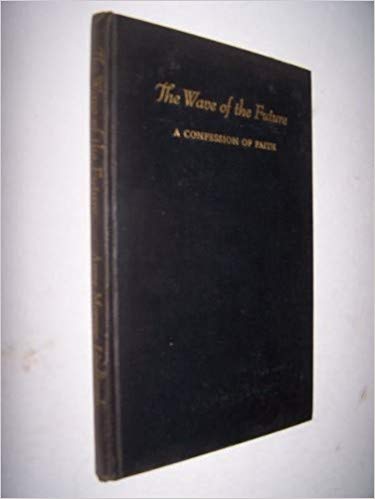 A Sad Faith in Hitler
A Sad Faith in HitlerThe Wave of the Future: Confession of Faith, by Anne Morrow Lindbergh (1940) HC, a cup stain on the cover, $1
In 1939 Charles Lindbergh was trying to arrange for peace between the United States and Germany. His wife, Anne Morrow Lindbergh, wrote this book in support of her husband. I should feel angry when I read this book. FDR certainly did. Yet mostly what I feel is sadness. She would be proved to be so very, very wrong.
Her husband was the famous flier who in 1927 was the first to fly solo across the Atlantic. He immediately became a world celebrity. Anne married him in 1929. She and her husband would explore the world together. When their baby son was found dead after a kidnapping-gone-wrong the world wept with them.
Charles, though, would start to associate with Nazis, make anti-Semitic remarks, travel to Germany and even be given a medal by Hitler. All this happened before Hitler invaded Poland, but afterwards Charles refused to return the medal. His popularity began to dim.
In this 41 page book Anne writes of her hope for the future, both for Europe and the United States. She sees violence in Europe as an ugly, but possibly necessary means to a better, more progressive, more democratic world. She thinks the United States with its strong character and ability to reform itself will be able to become a truer democracy by not becoming involved in the problems of Britain and France. Anne is concerned that others in America do not feel as she does. She hates that her country is so divided. She cannot understand why many of her fellow Americans are so angry and panicked.
She was thought to be a good person. And a smart one. How could she be so blind? How could Hitler fool her, and others, for so long? That is the question that I keep asking myself.
Submitted by KB June 5, 2019
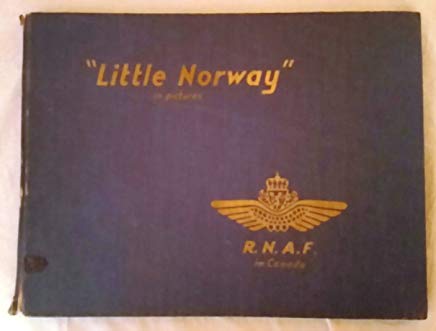 Little Norway in Pictures: With Supplement, Norway- Yesterday and Today, the R.N.A.F. in Canada (1943?) HC, 1$
Little Norway in Pictures: With Supplement, Norway- Yesterday and Today, the R.N.A.F. in Canada (1943?) HC, 1$
This book, with its beat up cover, weak binding and many small grainy pictures, does not look special, but it is.
Norway, after 125 years of neutrality, had just been invaded and conquered by Germany. This book is the story of a bunch of brave Norwegians fighting back by joining her air force, its flight school now relocated all the way to Toronto, Canada. This new flight school, called ‘Little Norway”, would graduate 2,500 pilots, flight crew and maintenance staff to help fight the war in Europe.
Norwegians came to Canada either the “hard way”, sailing across the North Sea, or the “easy way”, by way of Russia. (Either way sounds impossible to me!) Some of those who made it were experienced pilots. They would run the camp and train the men. The planes, built in the U.S., would be paid for by the Norwegian government out of income from Norway’s merchant marine ships. Gifts of money and goods also poured in from Canada, America, Scandinavia and even South America.
These men are photographed studying, training, exercising, flying and even having some fun. There are also a few pictures of weddings, and sadly, a few of funerals. When this book was written there was no guarantee that the Allies would win. There are no pictures in this book of men feeling fear, anxiety, grief or loneliness, yet those feelings must always have been in the background. Regardless, these Norwegians did what they set out to do. They became airmen, went to Europe and proved themselves to be superior fliers.
What makes this book special? It is these men, who traveled all the way to Canada, risked so much to learn to fly, and then flew so bravely to bring about an allied victory, and independence for their country. I feel inspired when I read their story. How about you?
Submitted by KB June 5, 2019
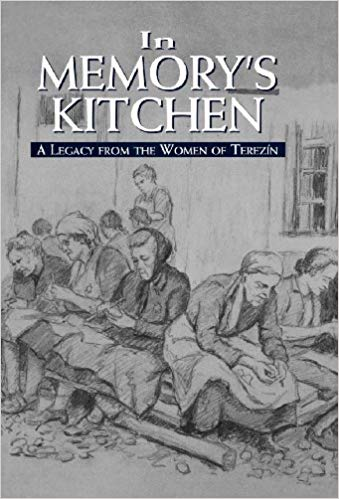
In Memory’s Kitchen: A Legacy from the Women of Terezin, edited by Cara De Silva (1996) SC, $1
Mina Pachter’s daughter and grandson managed to escape to Palestine in 1939. Mina — who stayed at home — would die five years later in a Czechoslovakian concentration camp. It would take twenty five years for her hand- bound collection of recipes to find its way to her daughter, who was then living in the United States. The book’s pages were brittle and the writing sometimes shaky, but Mina’s legacy had survived.
Food and cooking were a major part of a Czechoslovakian woman’s life. Cooking was how she sustained her family, how she could both carry on tradition and be creative. Cooking helped define who women were, as mothers, wives and members of their community. Many women wrote and collected recipes for books to pass on to their families.
Living in a concentration camp may have made doing this more difficult but not necessarily impossible. Mina and the other women at Terezin continued to think and talk of food. They would even argue passionately over how meals should best be made. When they had paper they would write out their recipes. All this while they and their families starved, suffered and many times died. As Michael Berenbaum, director of research at the US Holocaust Memorial Museum, writes in the foreword, “Recalling recipes was an act of discipline that required them to suppress their current hunger and to think of the ordinary world before the camps – and perhaps to dare to dream of a world after the camps.”
I’ve now read this book several times. I still can’t get my head around the idea of writing down recipes while starving. The recipes themselves look so very normal, but knowing how they came to be written makes them hauntingly special. Mina Pachter, you are not forgotten.
Submitted by KB May 30, 2019
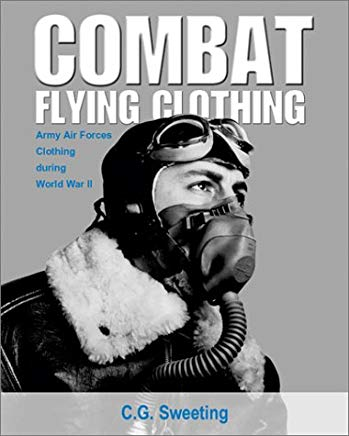
Combat Flying Clothing: Army Flying Clothing through World War II, by C. G. Sweeting (1984) SC, $4.
Remember those WWII movies when the airmen always looked so great in their air suits or bomber jackets? Had you ever wondered how this clothing was produced?
Early combat clothing was anything the airmen had around. At first it was goggles and scarves. Then it was football helmets, with ski suits for the cold. After WWII started something better was needed, and needed immediately.
The process was complicated. Designers and scientists had to get together to develop clothing that was resistant to cold, fire, oil, and seawater. It also had to be durable, flexible, and not too bulky, as inside a plane there was never much room to move around. The suits also had to be comfortable in both tropical and dry heat, as well as the cold.
After being designed, the suit had to be mass produced, which meant finding factories and workers. Material to make the suits had to be obtained, quite a feat when even basic materials were scarce. Alternatives for steel, wool and cotton had to be found. Sometimes you could use something else instead, but many times a material, like rayon or artificial rubber, had to be invented.
When planes and tactics changed, so did combat air suits. Further into the war planes flew higher, faster and for longer. This meant, just for starters, adding oxygen masks and heated clothing to prevent frostbite. It also meant dealing with full bladders, a subject not mentioned in war movies.
How amazingly complex was the job of making combat flight clothing, and what an amazing book!
Submitted by KB May 30, 2019

The Iron Tonic, or a Winter Afternoon in Lonely Valley, Edward Gorey (1969)

No one writes or draws like Edward Gorey. He depicts very properly dressed Victorians, but they never speak or do anything but walk or stand around. They exist in a world filled with stark, lonely buildings and landscapes. The settings in Iron Tonic are even starker because it is winter and the days overcast. The ground is covered with snow, so it’s supremely quiet. Add to all this the items scattered about or falling from the sky – clocks, bundles of eels, tombstones, massive threatening birds, even dead babies….
Well now do you know why people call his art “unique”?
Gorey’s art is described as both Surrealist and Gothic. His prim and proper Victorians share their gloomy, silent space with objects that don’t belong. His detailed drawings are usually in black and white, their dark areas made by slashes of a pen. Like in dreams, the real sits next to the unreal.
Gorey felt shy and insecure even after he was famous. He was brilliant, graduating from Harvard in 1950. He loved literature, art, dance, music and even television commercials. When he died he owned 25,000 books. Oddly, Gorey saw himself as primarily an author, drawing only to illustrate his writing. He also designed stage costumes and scenery, winning a Tony in 1978 for “Dracula.” Of course he also did the art for the introduction to PBS’s Masterpiece Theater. What an amazing creative genius.
Some of his drawings leave me puzzled, but most leave me nervous, insecure and very unsettled. I want to flee, but I am trapped, stuck with my fear and anxiety… at least until I turn the page.
Submitted by KB May 25, 2017
One More Valley, One More Hill: The Story of Aunt Clara Brown, Linda Lowery (2002)
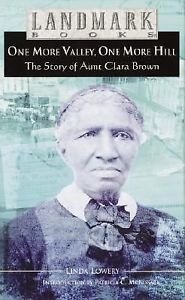
Clara Brown was born a slave in 1802. She was sold twice, once when she was three, and once as an adult when she had to watch her husband and children sold to other people. She was strong, and so was her religious faith, and so she managed to survive.
Her new master sometimes beat her, but when she was 56 he died and left her money in his will. In addition, his daughters decided to buy her freedom. Moving west to St. Louis she was able to find work as a cook and laundress. By the time the family she worked for moved away Clara had earned enough money to set up her own business.
When gold was found in Colorado, Aunt Clara decided to move further west. She got free passage on a wagon train by working as a cook and laundress for 26 men. Since she was black she couldn’t ride, but had to walk the entire two month journey.
In Denver she started a new life. As a laundress, cook, mid-wife and healer she earned a LOT of money. She invested quietly in property and mining claims, which only increased her wealth. She was always generous with her money. She used her wealth to start churches, pay for ex-slaves to immigrate to her community, and provide food and shelter for the destitute miners and freed slaves already there. She also paid for women to go to college. Everybody knew and respected her, even the white community leaders. People called her “The Angel of the West.”
By age 80, Clara’s health and investments had both deteriorated. She had been swindled out of money by a real estate manager, and spent most of the rest helping others. Her one great fear was that she would die without finding her lost family.
Lowery tells in detail the story of the first black pioneer woman in Colorado. Clara Brown- what an amazing woman.
Submitted by KB May 22, 2017
The Ocean at the End of the Lane, Neil Gaiman (2013)
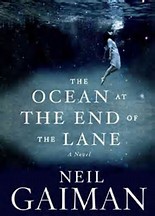
This book’s beginning is stark. The main character, never named, wrote, “Nobody came to my seventh birthday party.” His mother had games, cake and 15 chairs ready. But no one came. The child ate some cake and then went to his room to read. “I liked that”, he shared. “Books were safer than other people anyway.” Ouch, most of us remember a time as a child when we were disappointed, though hopefully not as badly.
Later the boy becomes friends with three farm women at end of his road. His experiences with them start out fine, but quickly turn into a nightmare. The women try to protect him, but are even they powerful enough?
These happenings are retold when the boy, now middle aged, comes home for a funeral. Whose funeral? We are never told. What a strange book, and not one I would have thought I’d like. How do I describe it? Is it a fairy tale? A paranormal experience? Or a story of a mentally unstable boy trying desperately to cope with reality? Was the pond at the end of the lane ever an ocean? Or was it always only a pond? I like to categorize things, but this story refuses to be categorized. After much thought I’ve realized, at least in this case, that it doesn’t matter what kind of book this is. It only matters that it is magical. Its story swept me up and took me to strange places – some sweet and comforting, some dark, ugly and evil. It’s been three weeks since I read this book, but whether real or fairy tale, I still remain haunted by the ocean at the end of the lane.
Submitted by KB May 15, 2017
Bony and the Mouse (1959), and Madman’s Bend (1963)
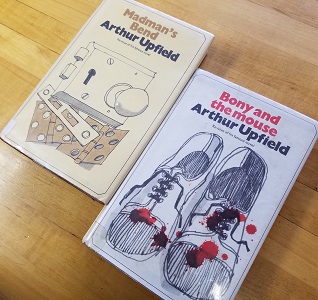
Tony Hillerman was inspired by Napoleon Bonaparte- no not the French general but Arthur Upfield’s police detective. Upfield was not someone you would expect to be a mystery writer. He had lived for years in the Australian outback, doing just about every job there was- cattle driving, cook, opal miner and so many more. He wasn’t a very good writer. There wasn’t even any sex! Neither critics nor readers liked his writings. Strangely it was WWII American soldiers arriving in Australia that discovered his books. When they couldn’t find enough copies in Australia an American publisher came to the rescue. These cheap paperback editions were banned in Australia, but his American readers bought enough to make him famous.
His unusual hero was a half cast Aborigine, raised by missionaries, who went on to grad school and a distinguished police career. Because of his brilliance he could observe obscure clues. He was a strategic planner, a result of his upbringing in the white world. He was also spiritually in tune with the land, patient, humble, and a good tracker, traits inherited from his mother. When undercover he could blend in no matter where he was. Sadly, being of mixed races he never really fit in. At times he was torn when his two heritages were at odds.
After reading these books I became interested enough to research Aboriginal history. Till 1967 they couldn’t vote, and their children were still brutally removed from parents even up to the 1970s. I can’t imagine the horror of those experiences. I also doubt, that in reality, a half caste would ever be given the power to arrest a white person, much less to become a detective inspector. So, sadly, these books are all rather a fantasy.
These books are still great reads. I love the descriptions of outback life and of the harsh and beautiful land. I love how Bony methodically figures out “who done it”. My favorite book is Mouse, but you will enjoy them both.
Submitted by KB February 16, 2017
Wojtek the Bear: Polish War Hero, Aileen Orr, author (2014)

This is the true story of a brown bear, named Wojtek (pronounced Voy-check), bought by Polish political prisoners just released from a Siberian prison. These men walked to Africa with the bear cub they had purchased with a can of meat. After the war when they went to a Scottish Resettlement Camp the bear went with them.
Normal male brown bears are aggressive and loners. Needless to say they don’t like to be touched. But no one had ever told Wojtek he was a bear, so he and his soldier friends had to figure things out as they went along. Wojtek turned out to be friendly, gentle, patient, playful and oh so very mischievous. He loved to be touched, and he loved to touch. He especially loved to wrestle. He also loved to eat. Finding enough food for him was a problem. In wartime food was highly rationed, yet daily he still needed 20,000 calories. Somehow food was found, and without the loss of local livestock. Wojtek might play with them, but he never hurt them.
One day, after watching his friends move artillery shells, he decided to help. He went over to a truck, picked up a shell, and walked it to the storage area. For him, walking on two legs carrying an artillery shell seemed to be the right thing to do. He continued to do this until he decided it was time for a nap. No wonder the army made him a private!
Wojtek made friends wherever he went, both with soldiers and local civilians. In particular he brought joy and laughter to his Polish soldier friends, men with neither families nor a country. Most were illiterate, and didn’t speak English. They were all alone in a strange land, but they had Wojtek and he had them.
As the camp emptied, it became obvious a home for Wojtek had to be found. With tears all around he was transferred to a Scottish zoo. His story would make the news again in 2005 when a statue was made to remember him.
This is the best story I have read all year. Buy it and you won’t be sorry.
Submitted by KB February 1, 2017
Sticker City, paper graffiti art, Claudia Walde (2007)

Alright, I’ll be honest. I expected to dislike this book. I hate the whole idea of graffiti, a form of what I consider vandalism. Little did I know there are differences between paper graffiti art and graffiti. Mainly, paper graffiti is not permanent. Paper artists create their messages using different materials like posters, stencils, or stickers. The art, if it is art, never lasts more than a few years. Some lasts less than a month.
This way of expression started in the 1950s when the advertising industry began taking over public spaces. Later, as costs of creating art rose, and with less exhibition space available, fewer people could display their work. Even art that was exhibited would be seen by only a few. Paper graffiti artists rebelled, creating art on walls. (Or maybe they just liked decorating walls?)
Who does this stuff? Unlike teenage graffiti artists, these people are usually older. Some of them probably switched from graffiti when they became tired of jail time. This form is freer, with less rules than graffiti. Yep, graffiti has rules. As printing, adhesives, photocopying, and computer software improved, so did the ease and cost of paper art, but you still have to know which paper, glue and kind of wall surface works best.
Did this book change my mind about paper art? Both yes and no. This form of art is still vandalism of private property, but it also produces a wonderfully unique personal expression or message. Some of the works have profound social themes. Some are simple, some just weird. Many are mischievous, and made me laugh. Swoon’s work, using life-sized cut-out figures, is elegantly beautiful. I would dearly like to see her work, and even some of the other artists’. Yet I have questions. Is this really art? What do the owners of the buildings think of this “art”? How would I feel if it happened to my property? The answers aren’t as simple as I thought.
Submitted by KB January 27, 2017
Salt, Sweat, Tears- The Men Who Rowed the Oceans, by Adam Rackley

No one even considered rowing across the Atlantic till 1896 when George Harbo, an immigrant to America, wanted a way to become famous and rich. He knew he would do just fine as long as he could find a boat, a rowing partner and the Gulf Stream current. Of course there were those 2,500 miles of open water to navigate. These amazing two men took on wet clothing, lack of sleep, capsizing, thirst, hunger, salt water sores, rogue waves, ice bergs, a hurricane and even a fire. They became really good rowers. They also became really, really good at bailing. Somehow he and his partner reached Ireland, and in only 55 day! Unfortunately few people paid to hear their story. So much for dreams of fame and fortune.
Eventually in 1966 someone tried again. David Johnstone decided to deal with his depression by making another cross-Atlantic attempt. He made detailed plans, found a partner, and had a boat made. Learning that someone else was going to do the same thing, he decided to start out immediately, even without the planned physical preparation, or his boat’s sea trials. At first life wasn’t too bad. Each man rowed 8 hours a day. This left them lots of time to eat well, talk and more importantly, to sleep. Eventually, though, they began to doubt their abilities.
The other rowers, Ridgeway and Blyth, had problems of their own. They had only 10 weeks to get ready, no boat and no experience. Blyth had never even been to sea. What they did have was discipline and tenacity. Each rowed 16 hours a day, in bad weather and good, even after they lost a third of their food. Physically they were always in rough shape, but still they kept going, reaching Ireland after 91 days. Unfortunately Johnstone and Hoare never did.
Rackley’s book mostly describes his own 2010 experiences. I admit to being more interested in those earlier tales of 1896 and 1966. Later rowers, with their bilge pumps, sliding seats, solar panels and GPS, have an easier time of it. Now more than 300 boats have made it across some ocean or another. Having a bilge pump or not, crazy a little (or a lot), these men are true athletes. Hats off to them all.
Submitted by KB January 24, 2017
Roadside America, 365 Days, by Lucinda Lewis (2003)

I always thought the male fascination with cars was silly. Cars are just things that take us where we want to go. After I bought my first car, though, a 1979 Datsun 210, I realized that loving your own car might not be so silly after all. Then one day I was invited to ride in a souped up 1964 GTO with a massive racing stripe down its hood. It was love at first sight. I still get excited when I see a classic car, especially if I can poke my head inside.
Most of the cars in this book, and the occasional truck, are old, but a few are newer. Most photos are in color, but strangely the few black and white ones affected me more. I love the hood ornaments, the tail fins, and the front grilles. I even love those vinyl seats, so blazing hot in the summer. I love the Route 66 diners and filling stations. I love this book, even if 15 of the photos are “missing”.
When it comes to my favorites, I’d have to mention both the weird 1938 Phantom Corsair and its plane cockpit instrumentation (including an altimeter), and the 1937 air conditioned Airmobile prototype that looks like a goldfish!
Did I mention I love this book?
Submitted by KB January 13, 2017